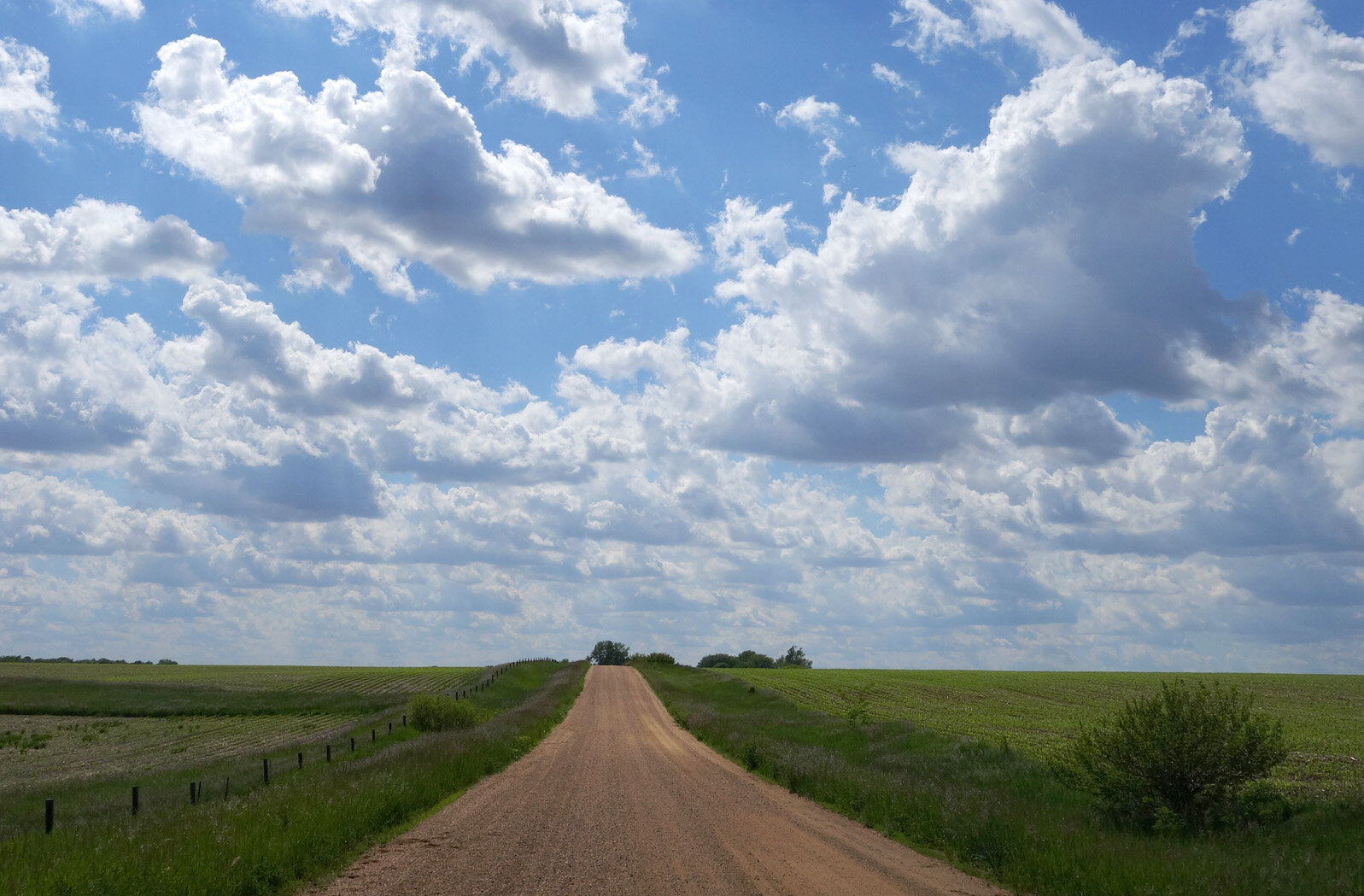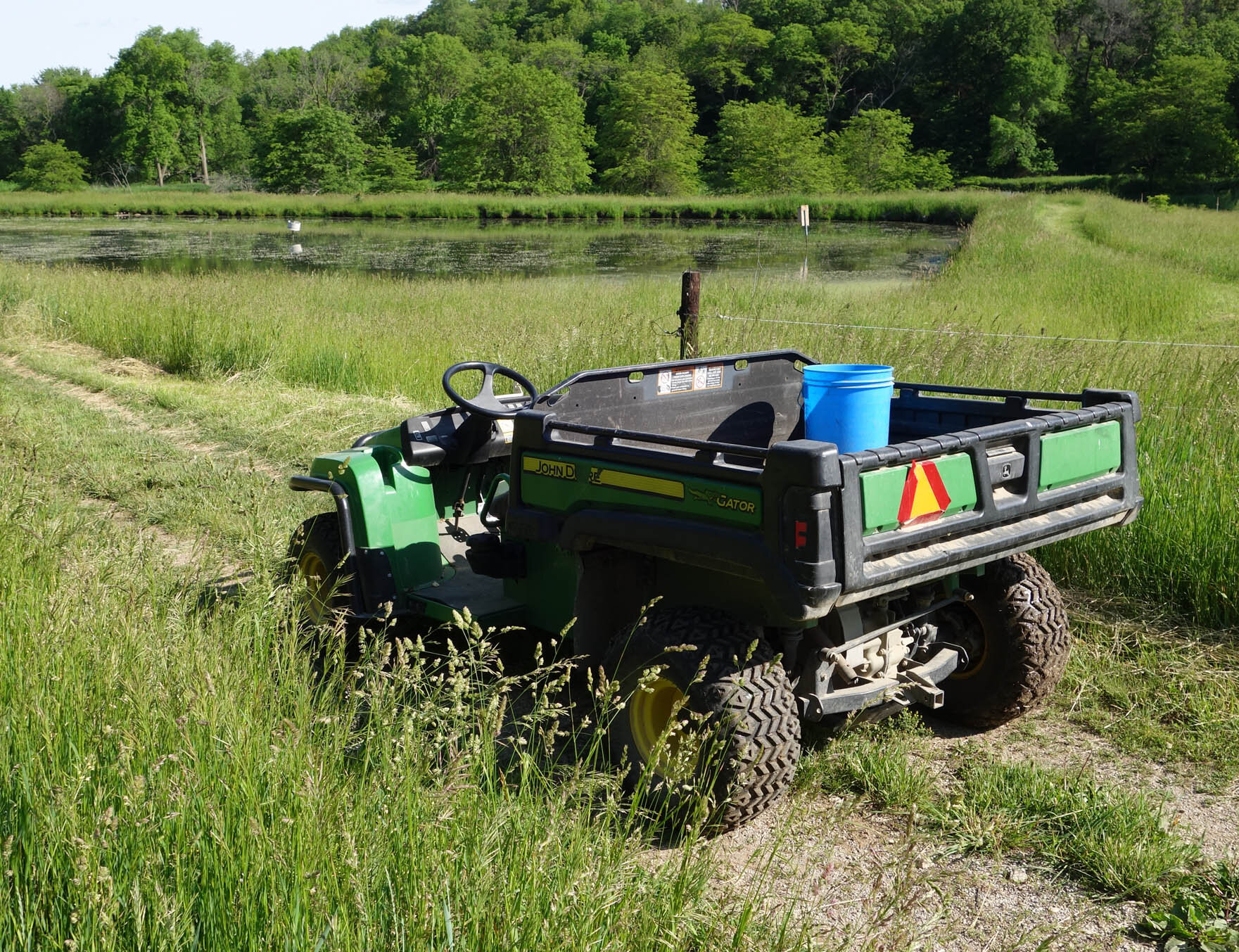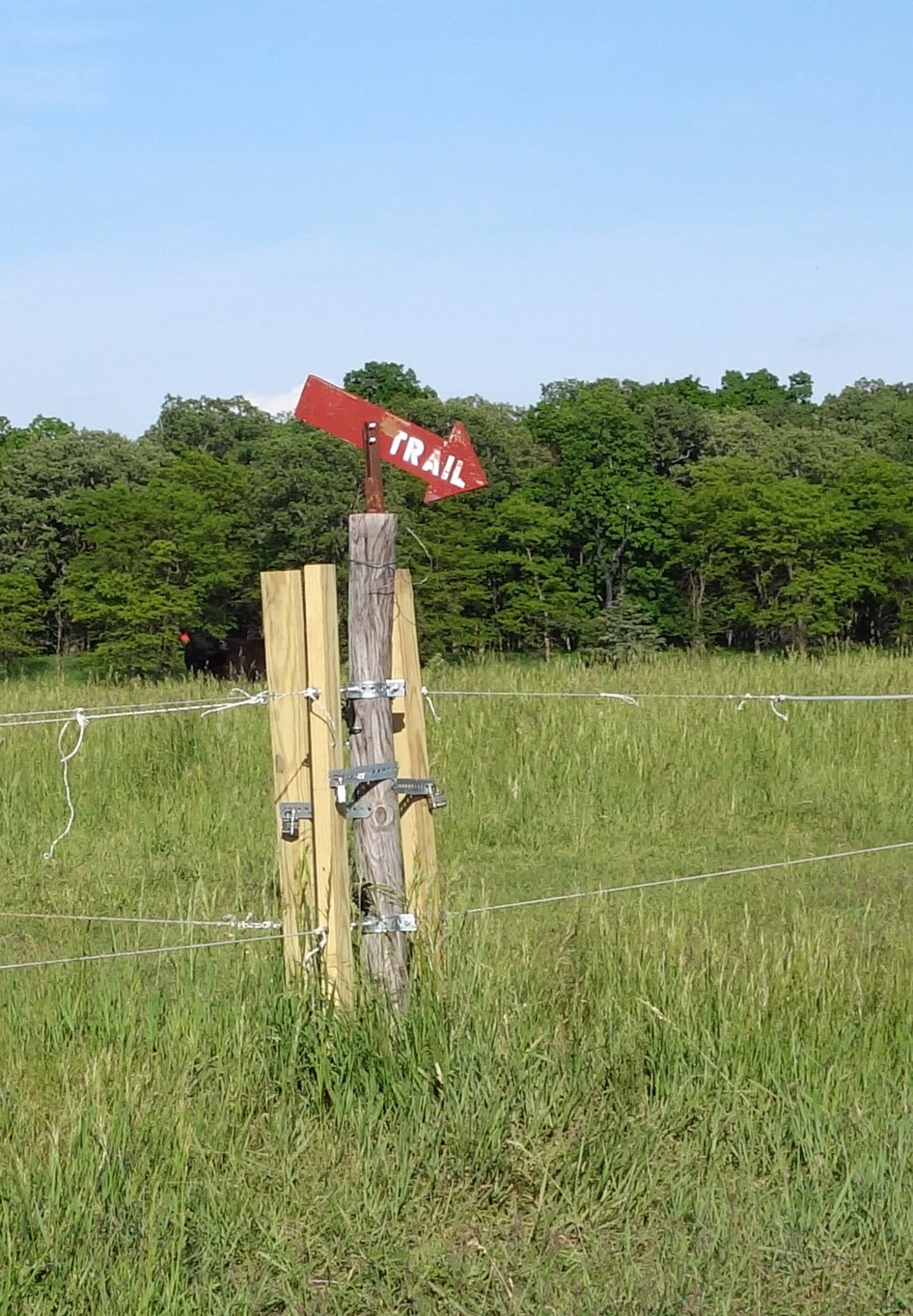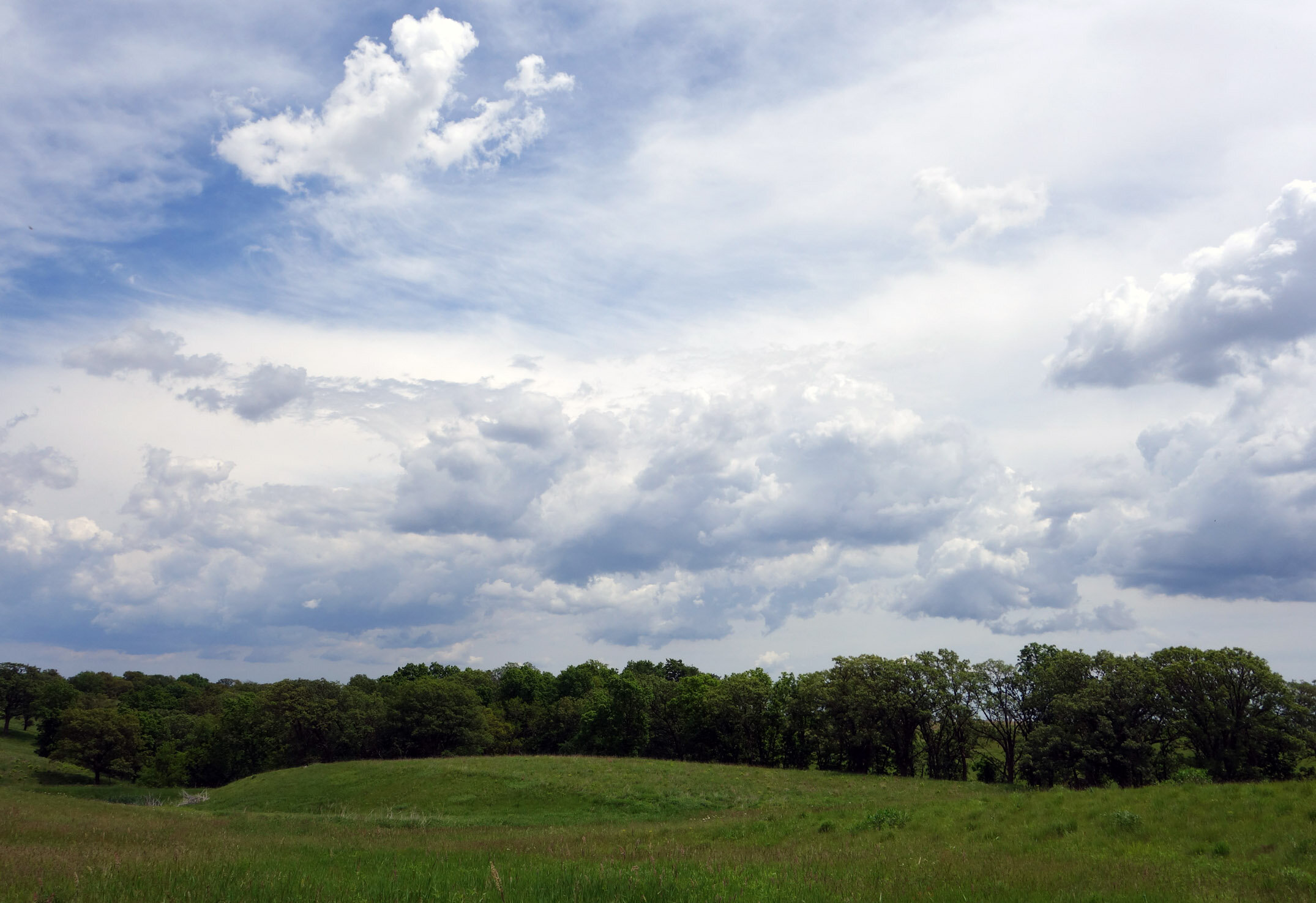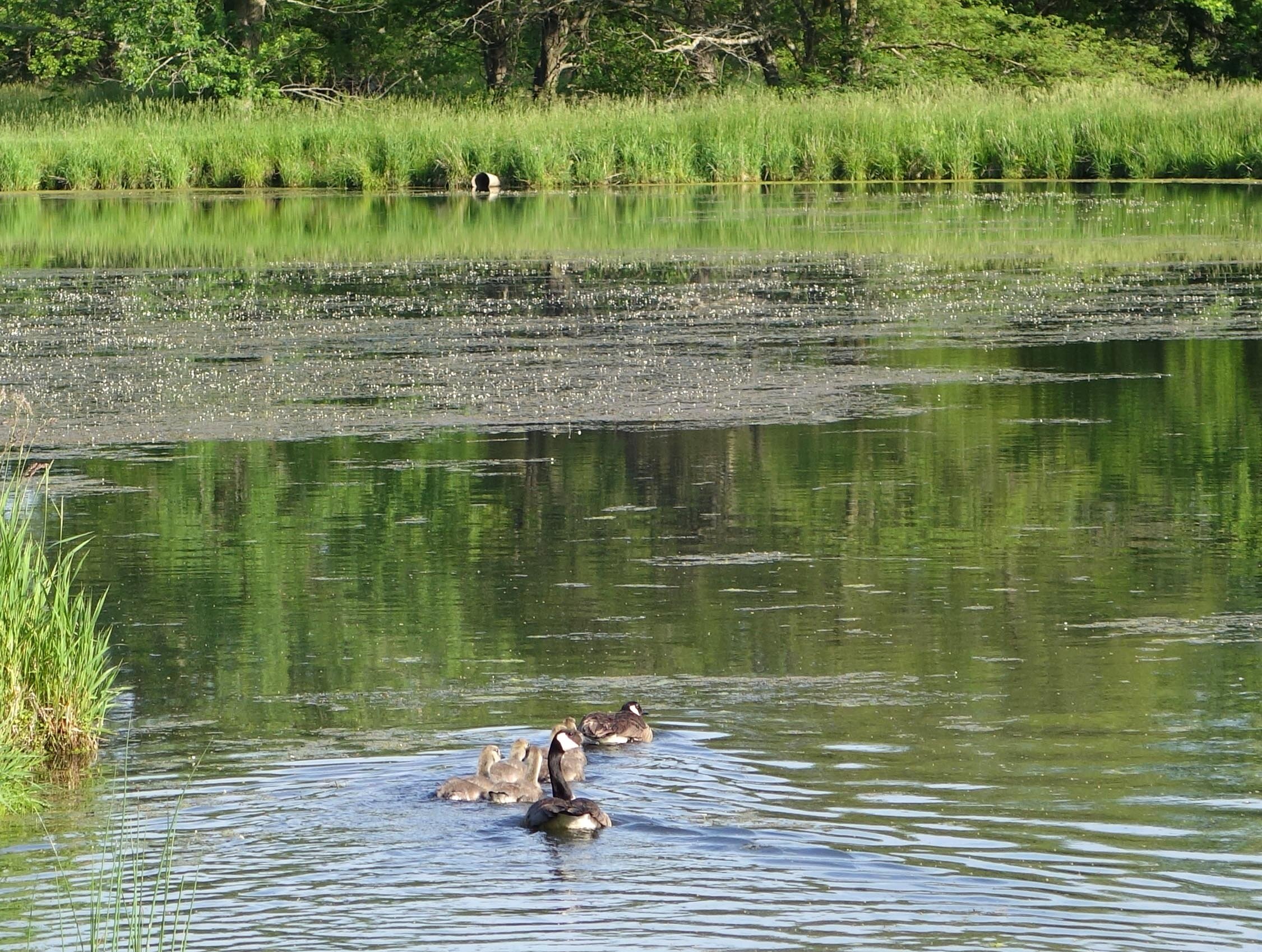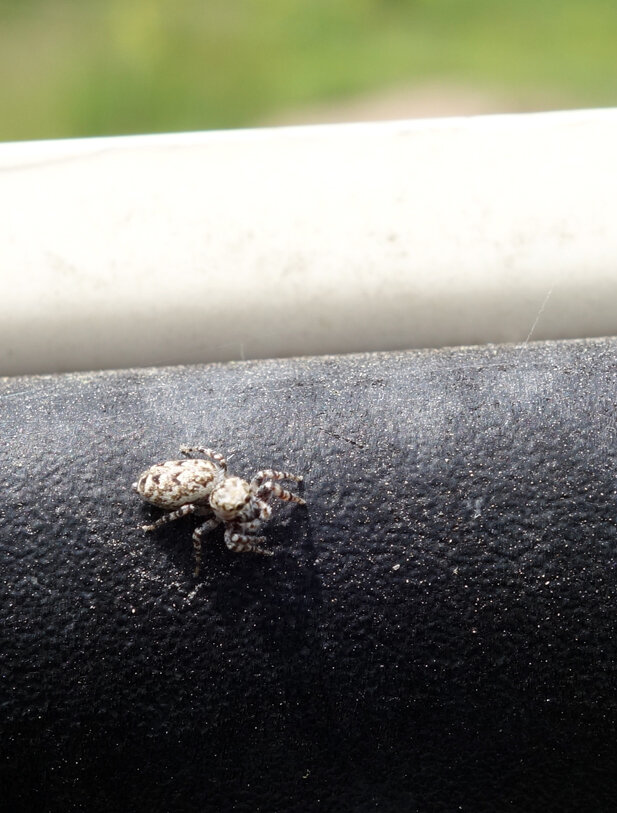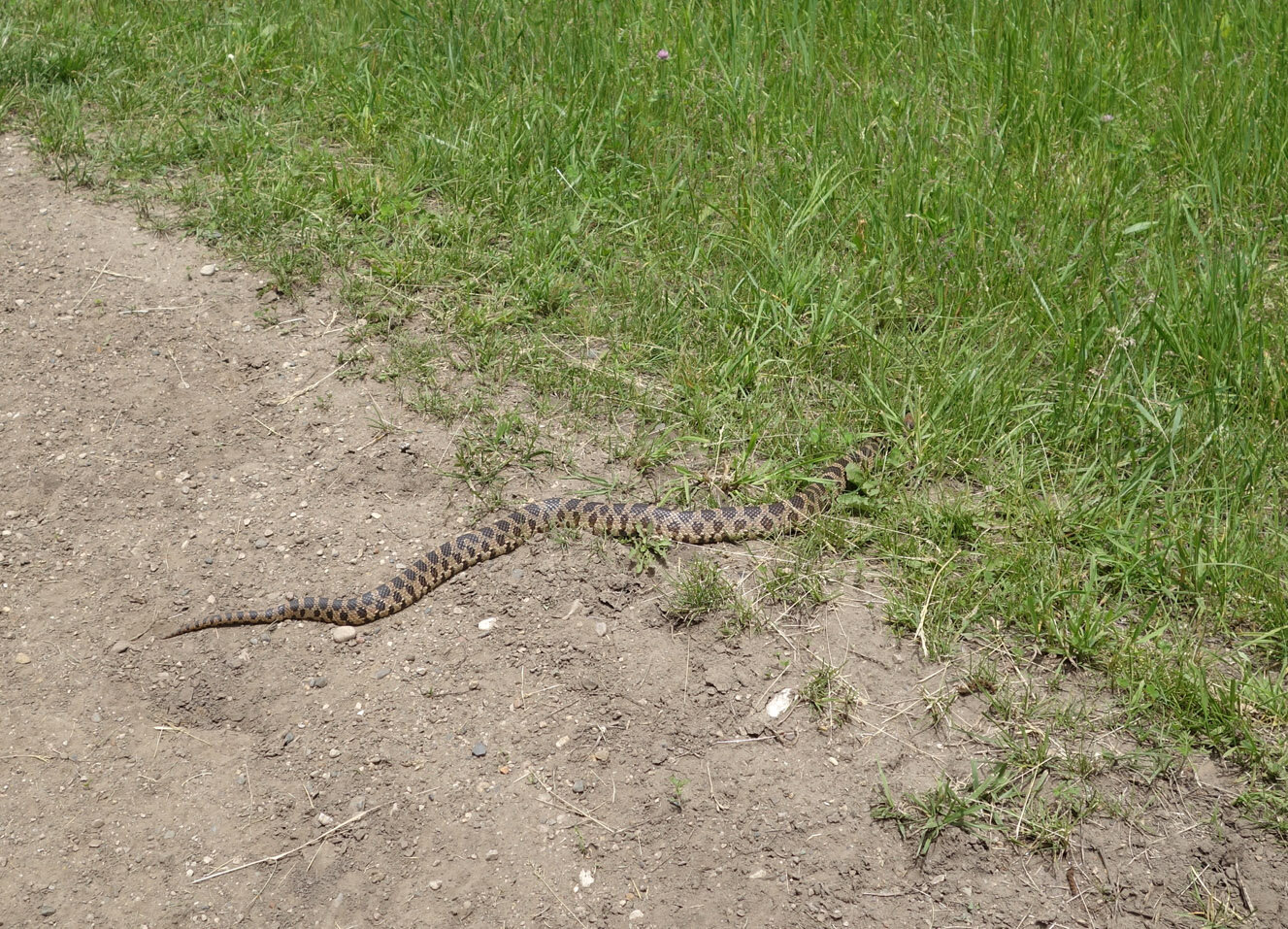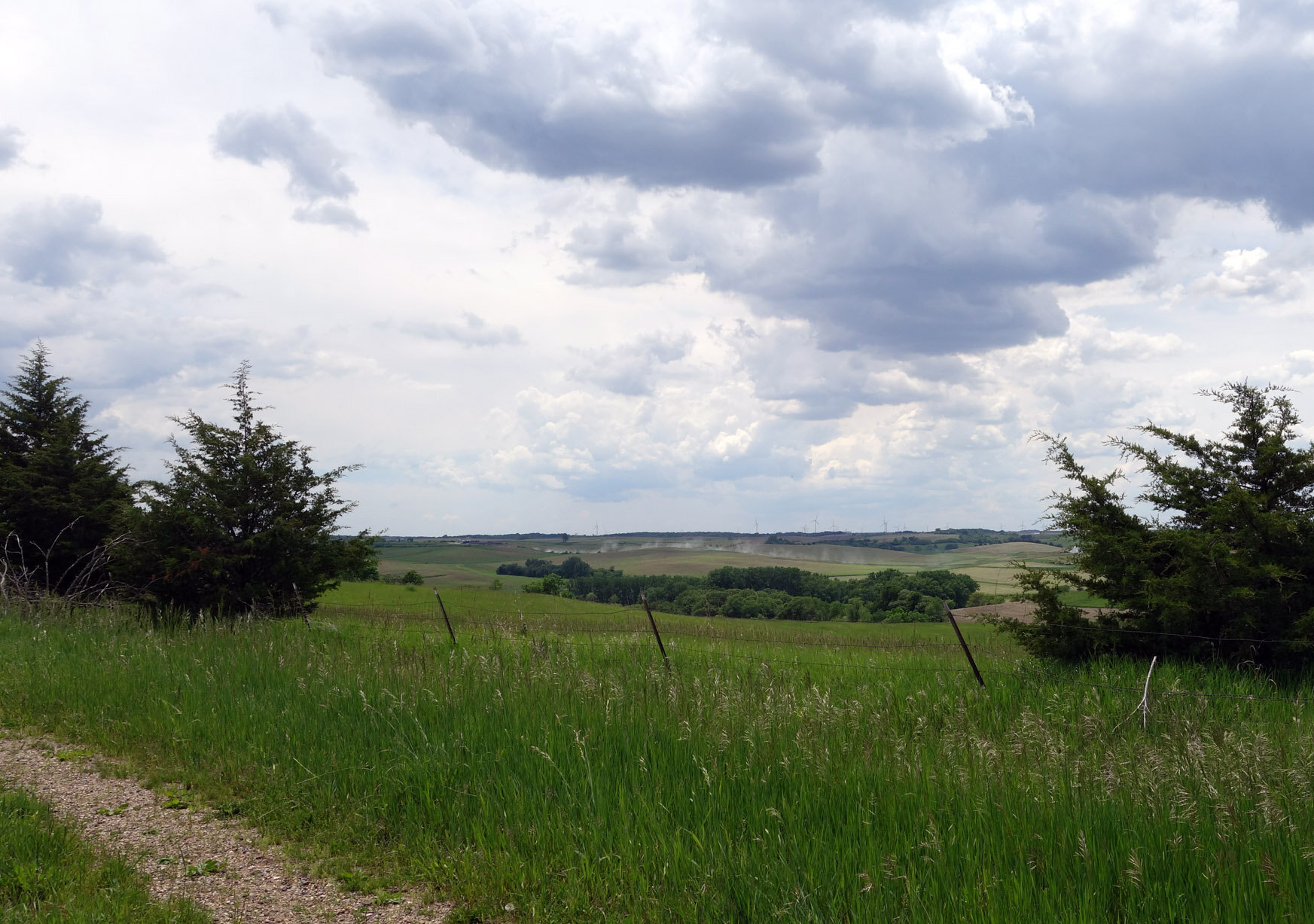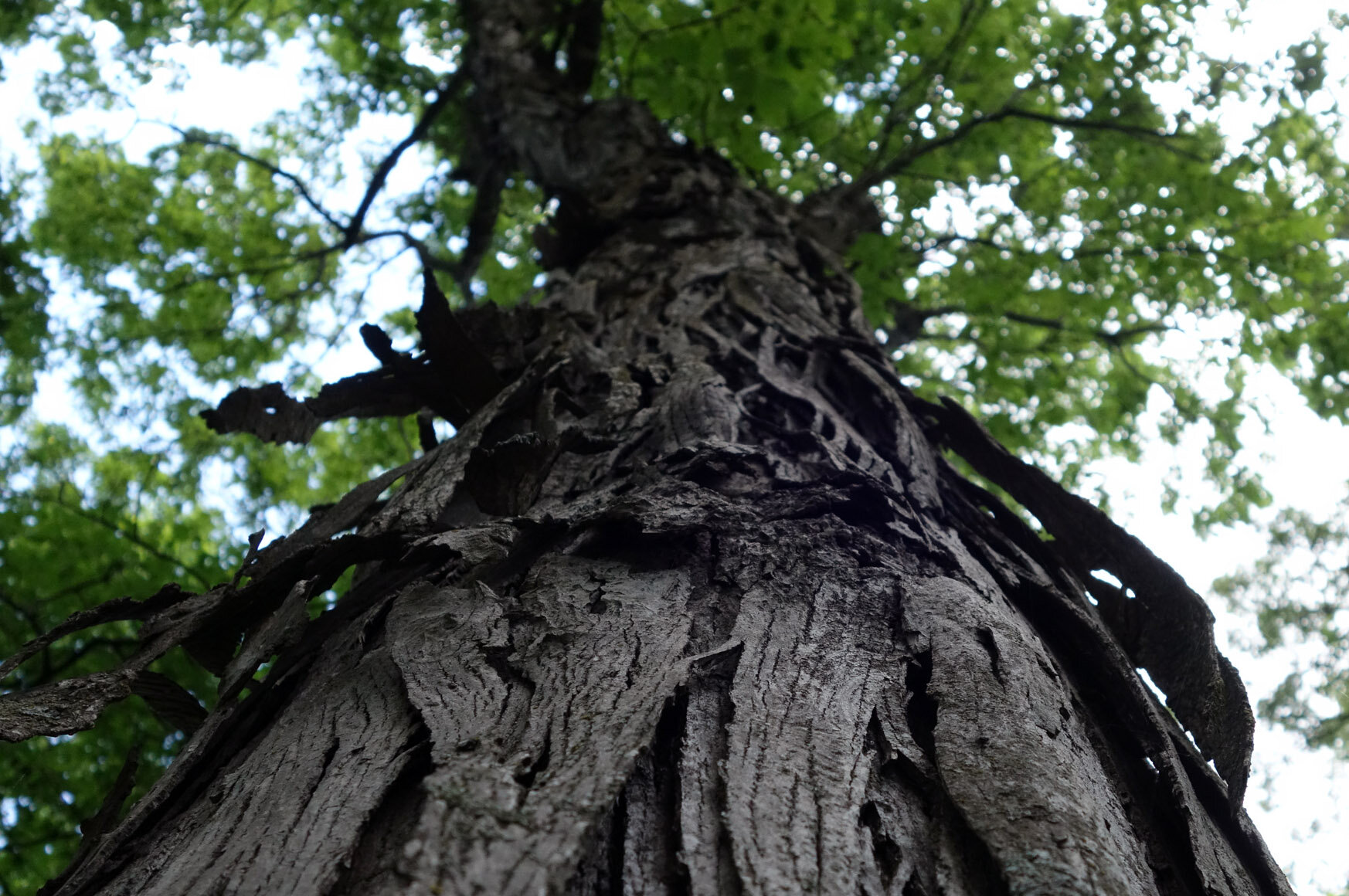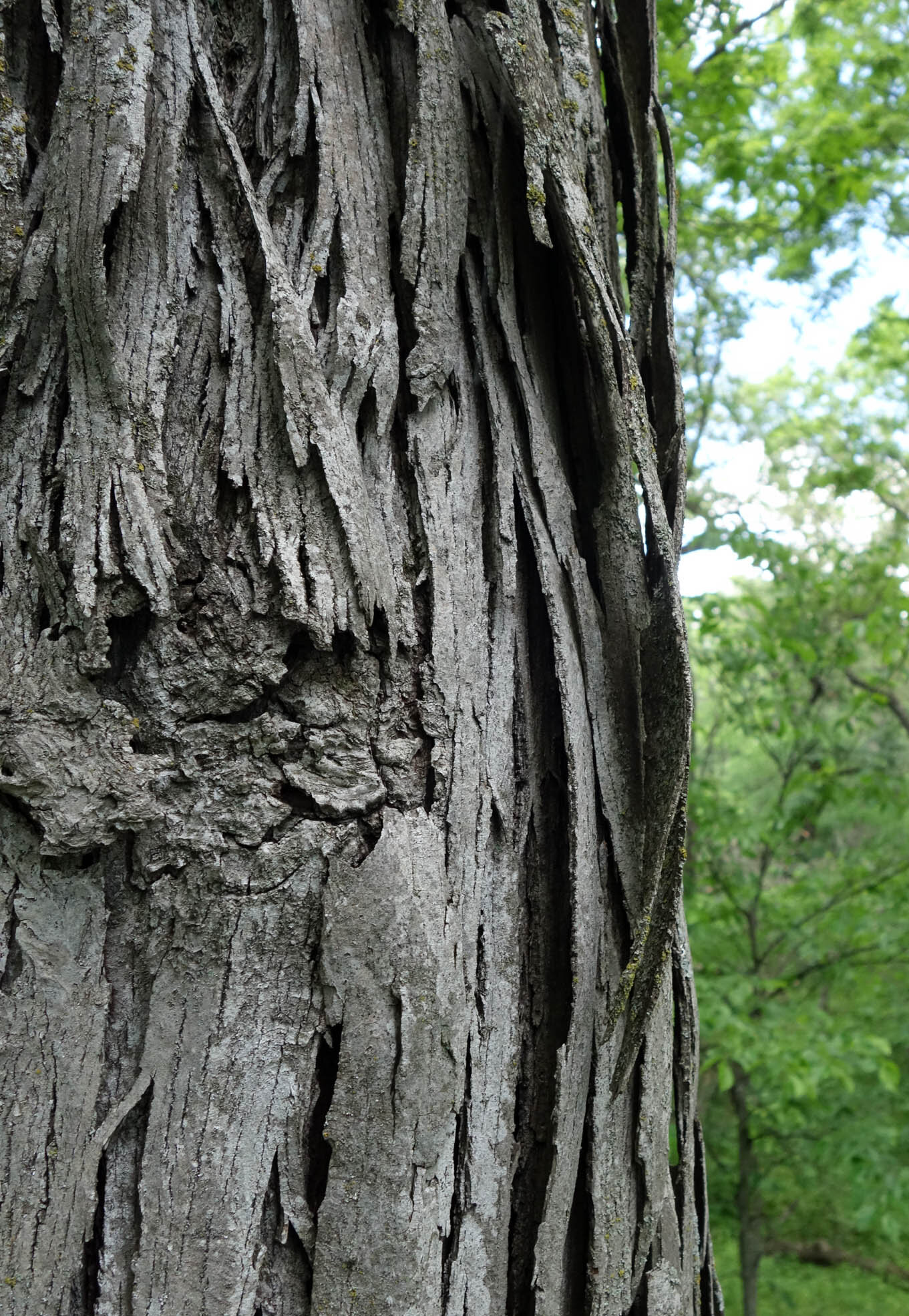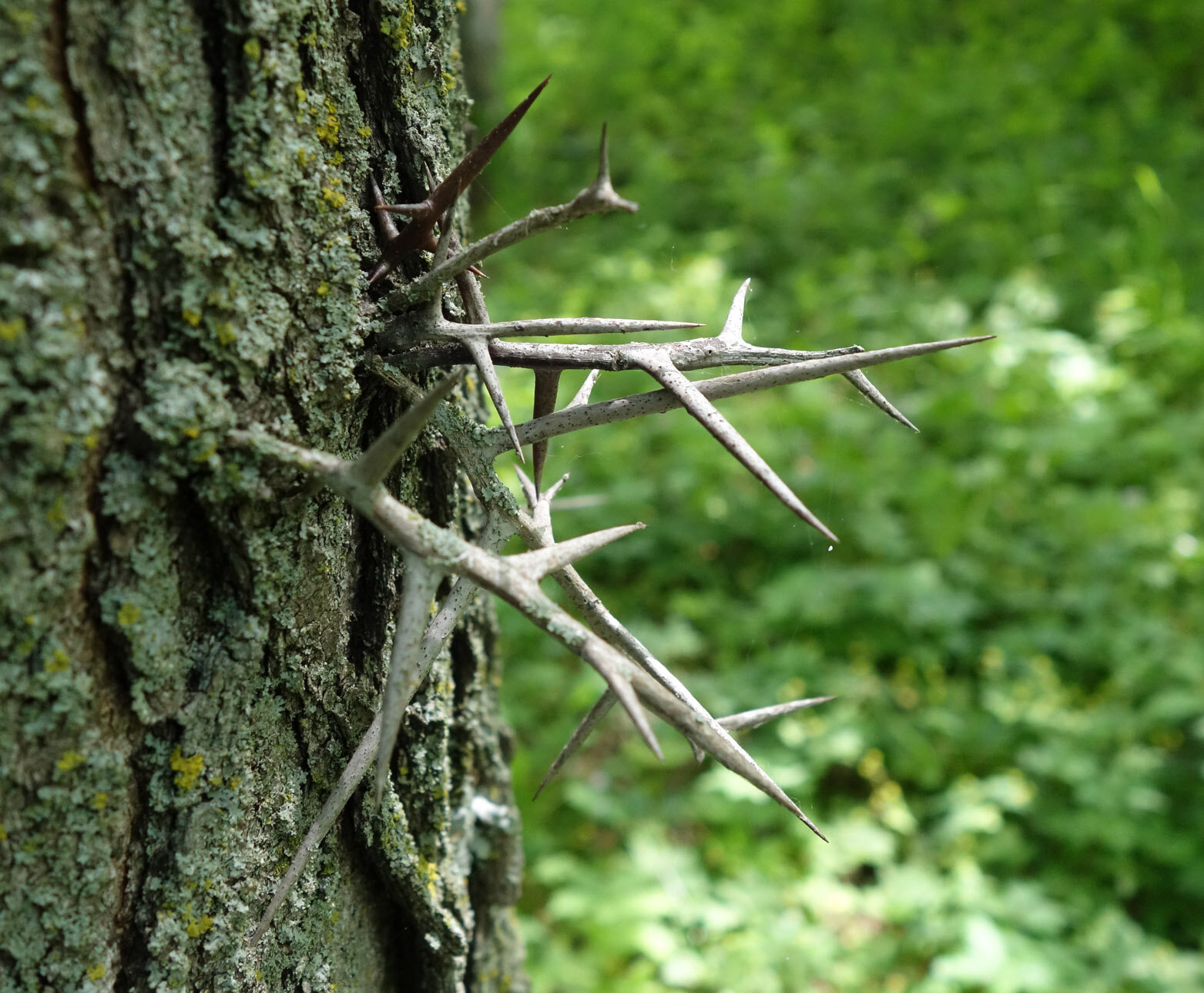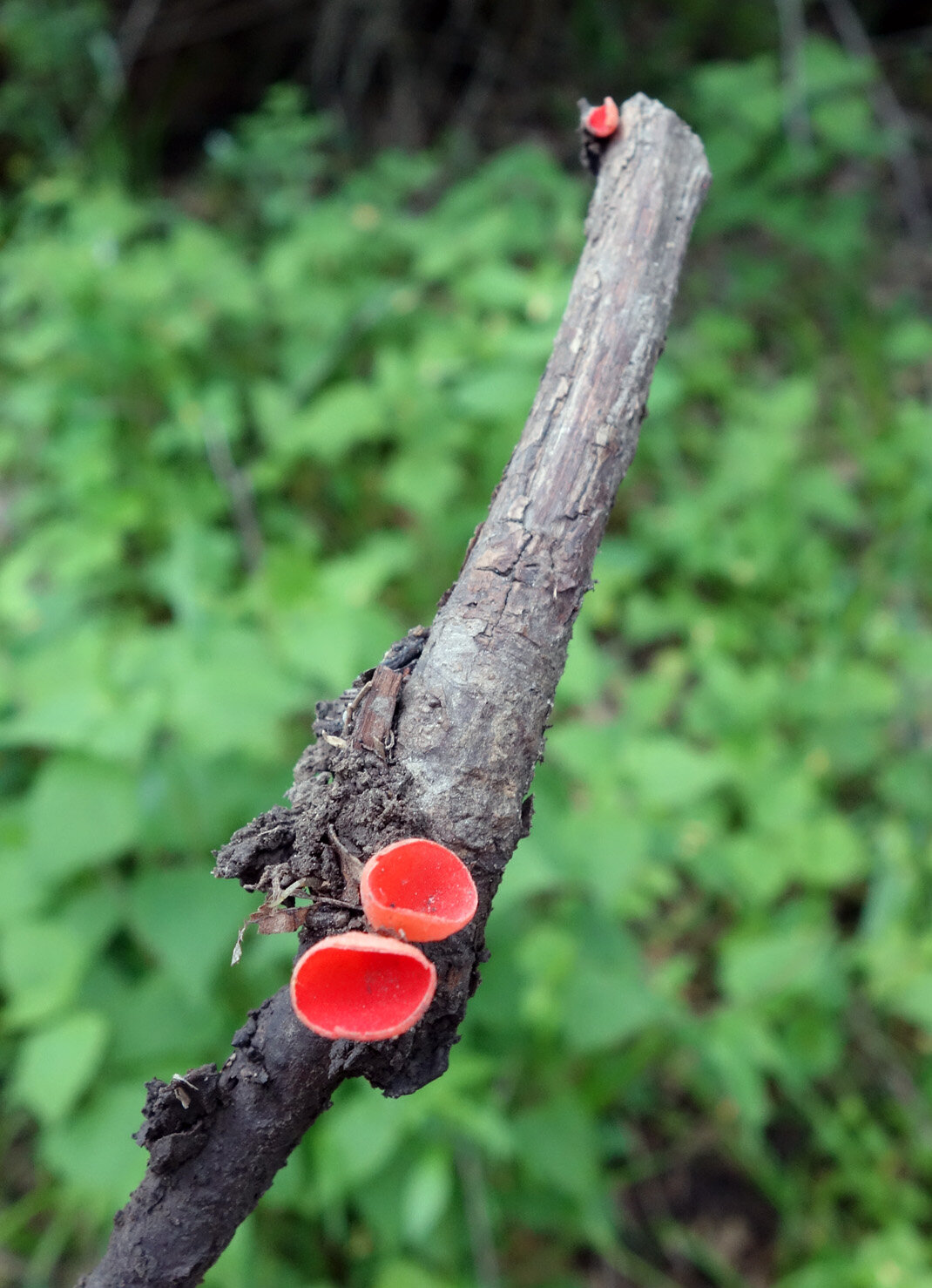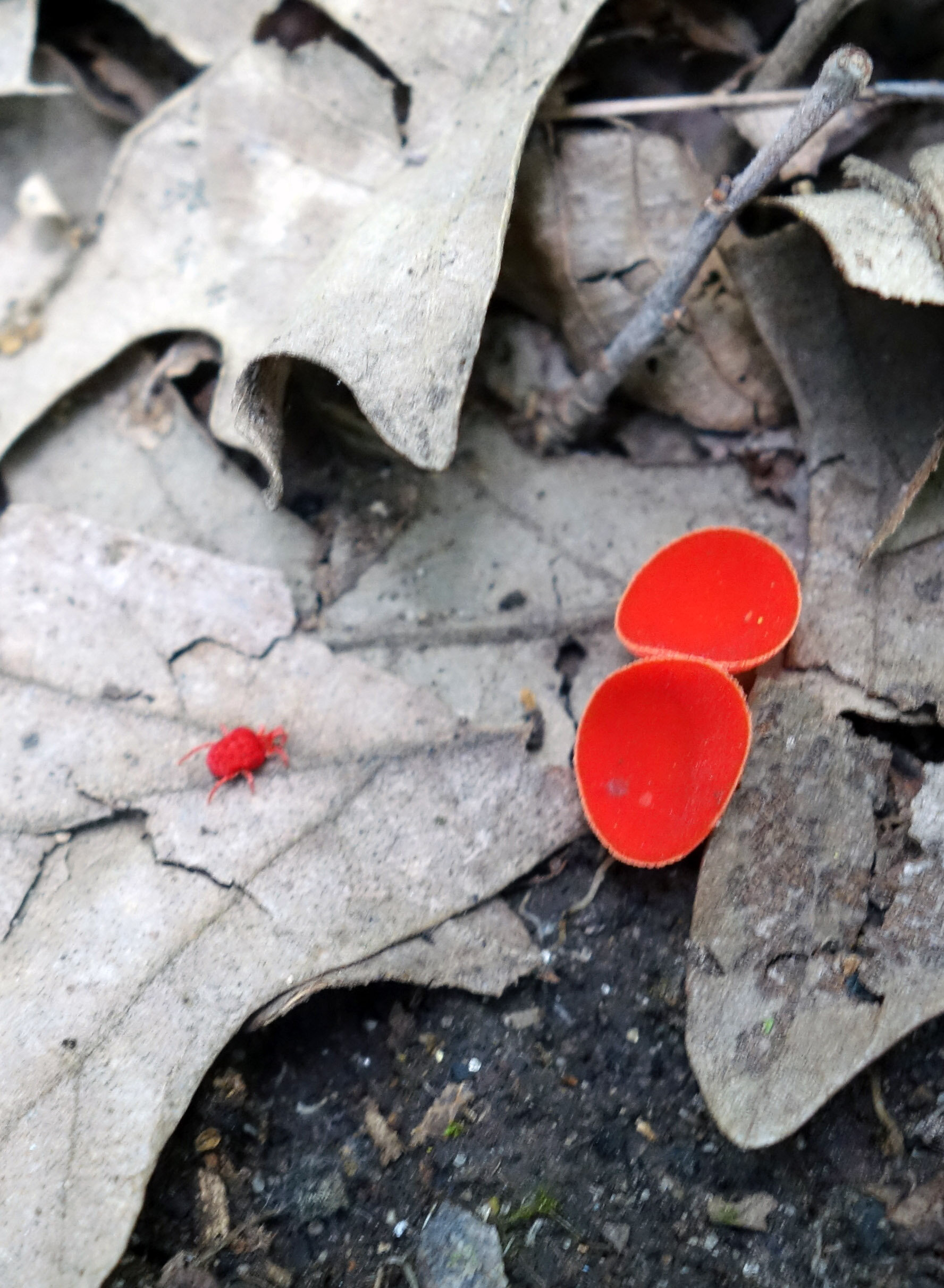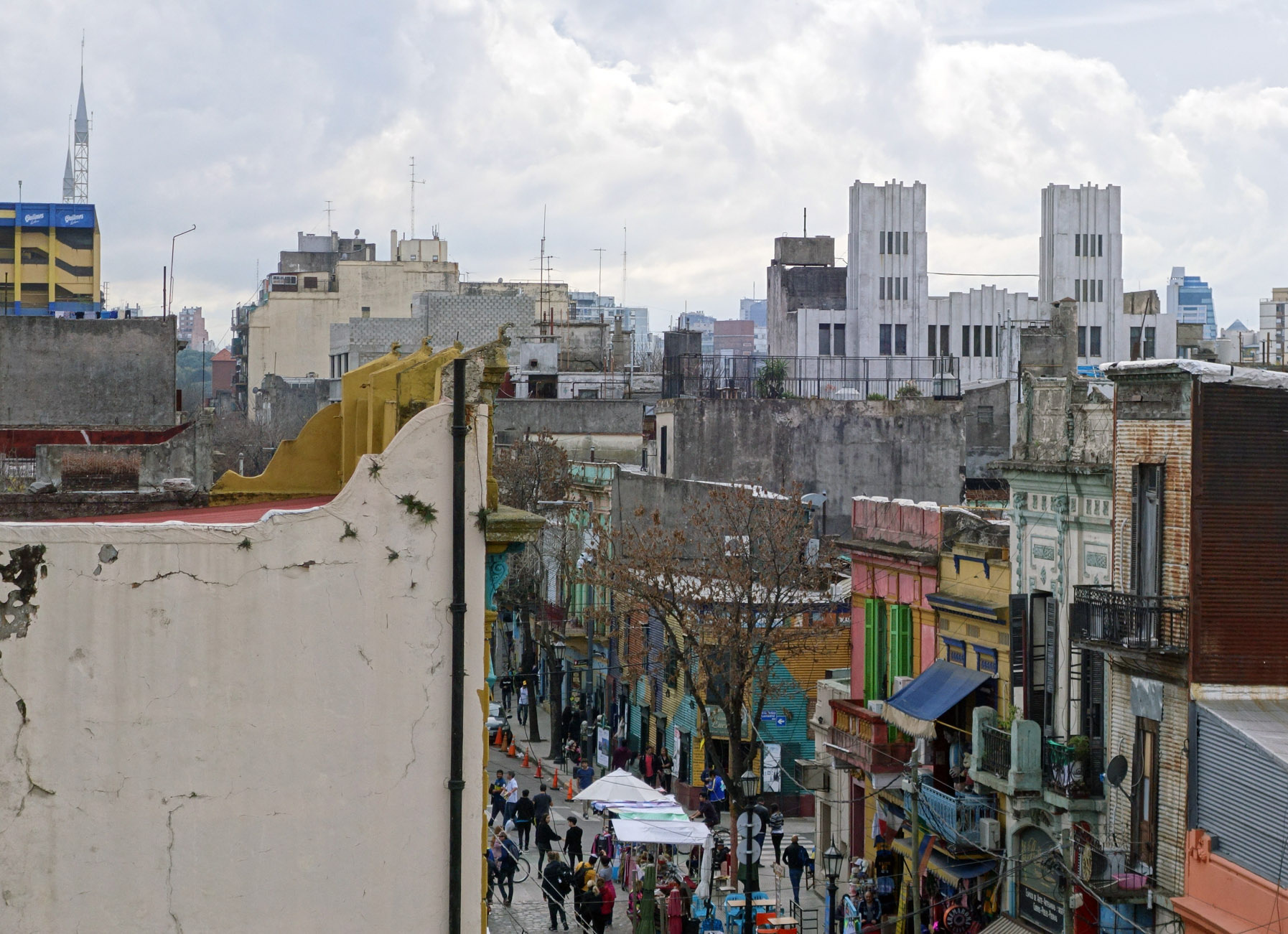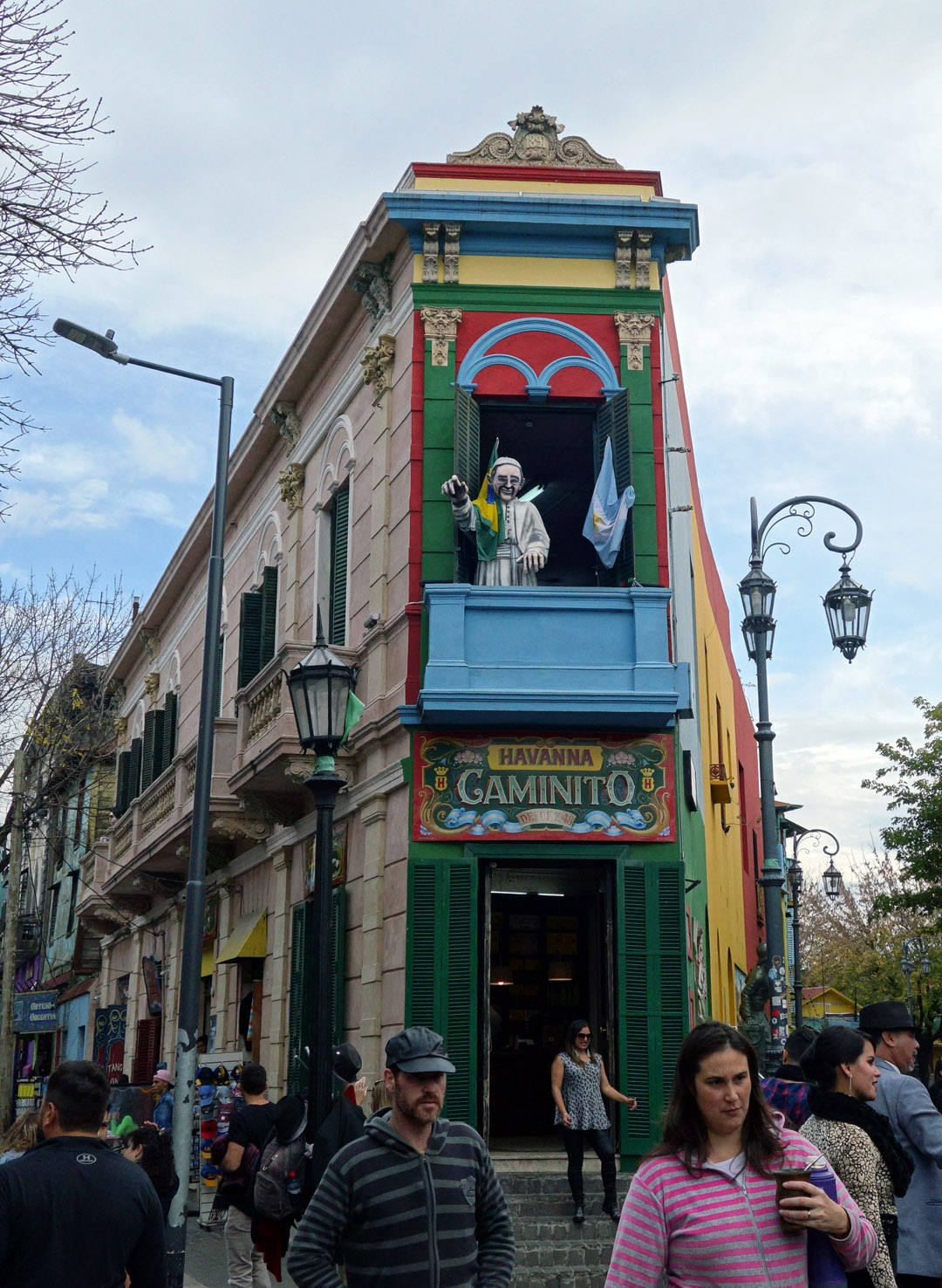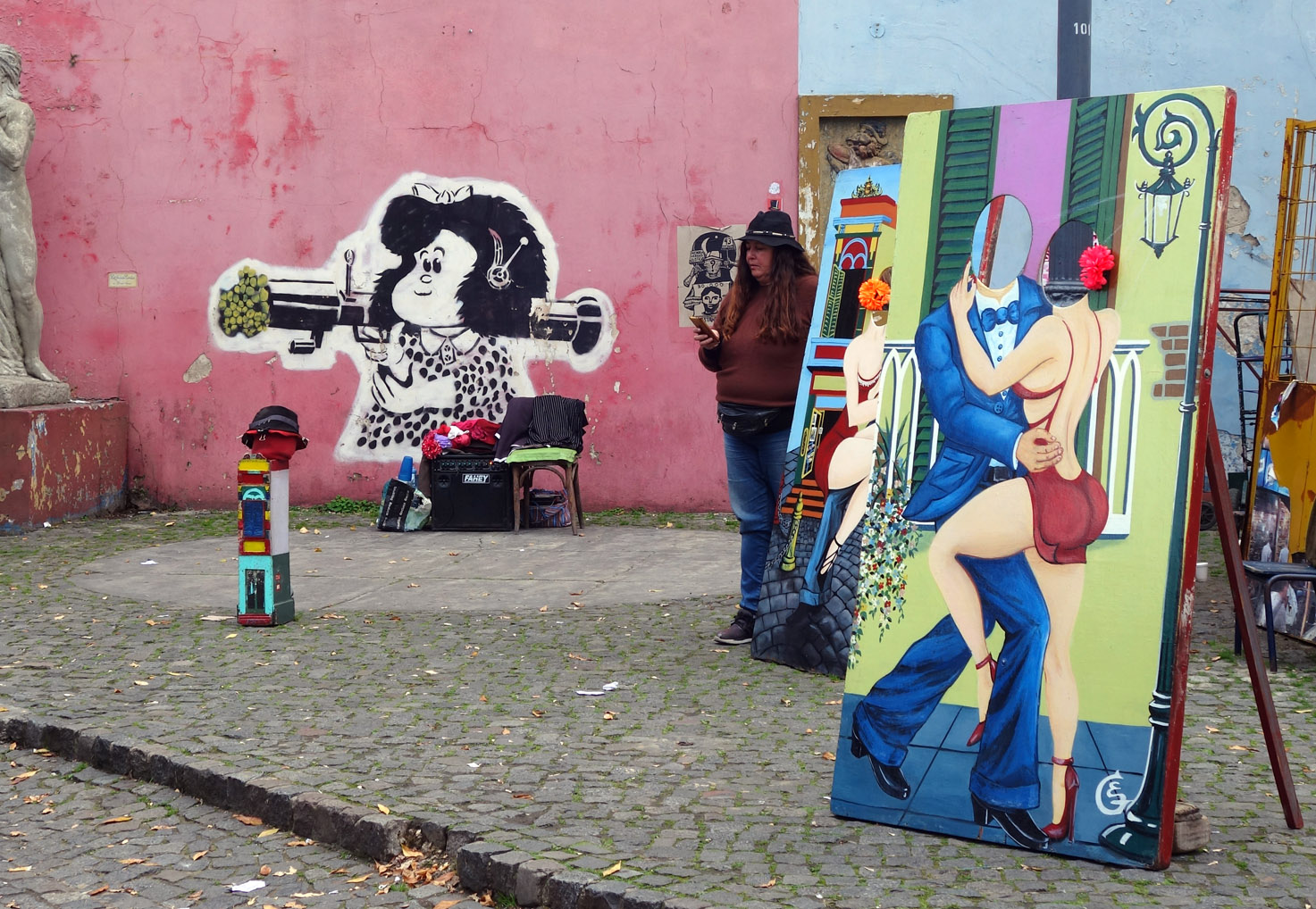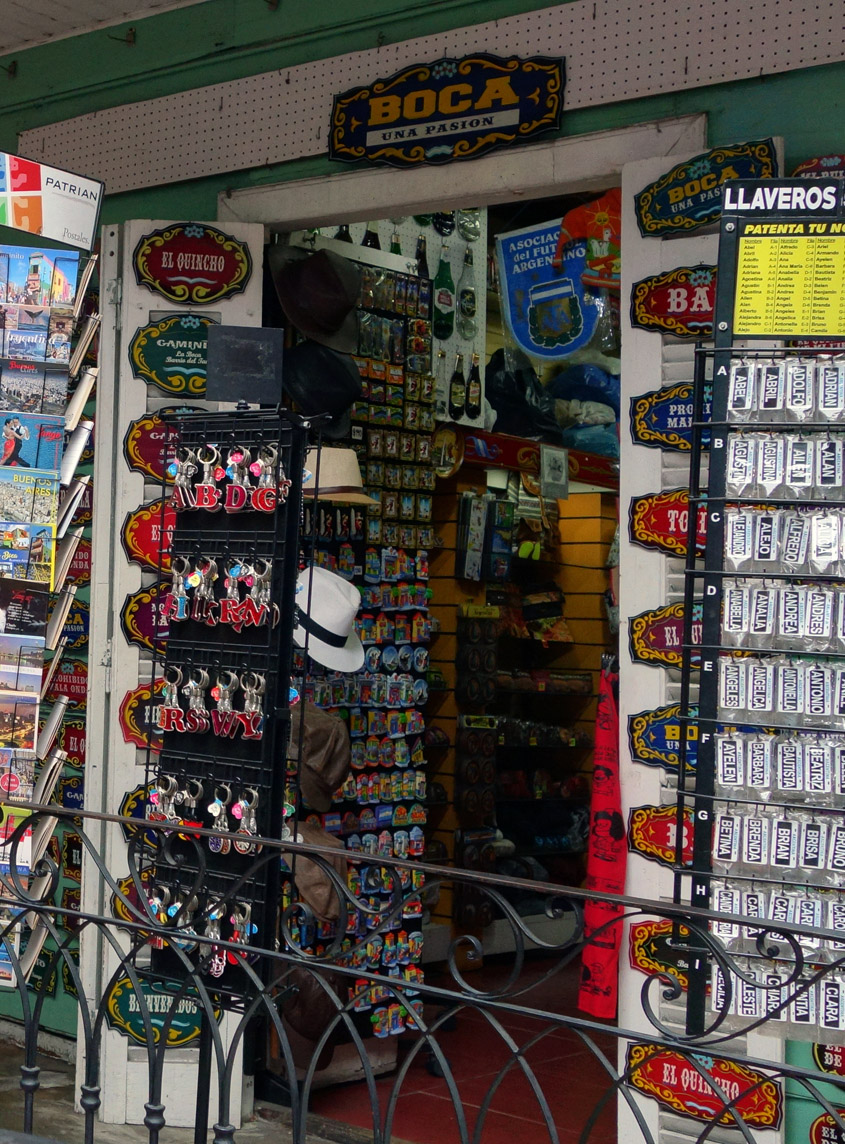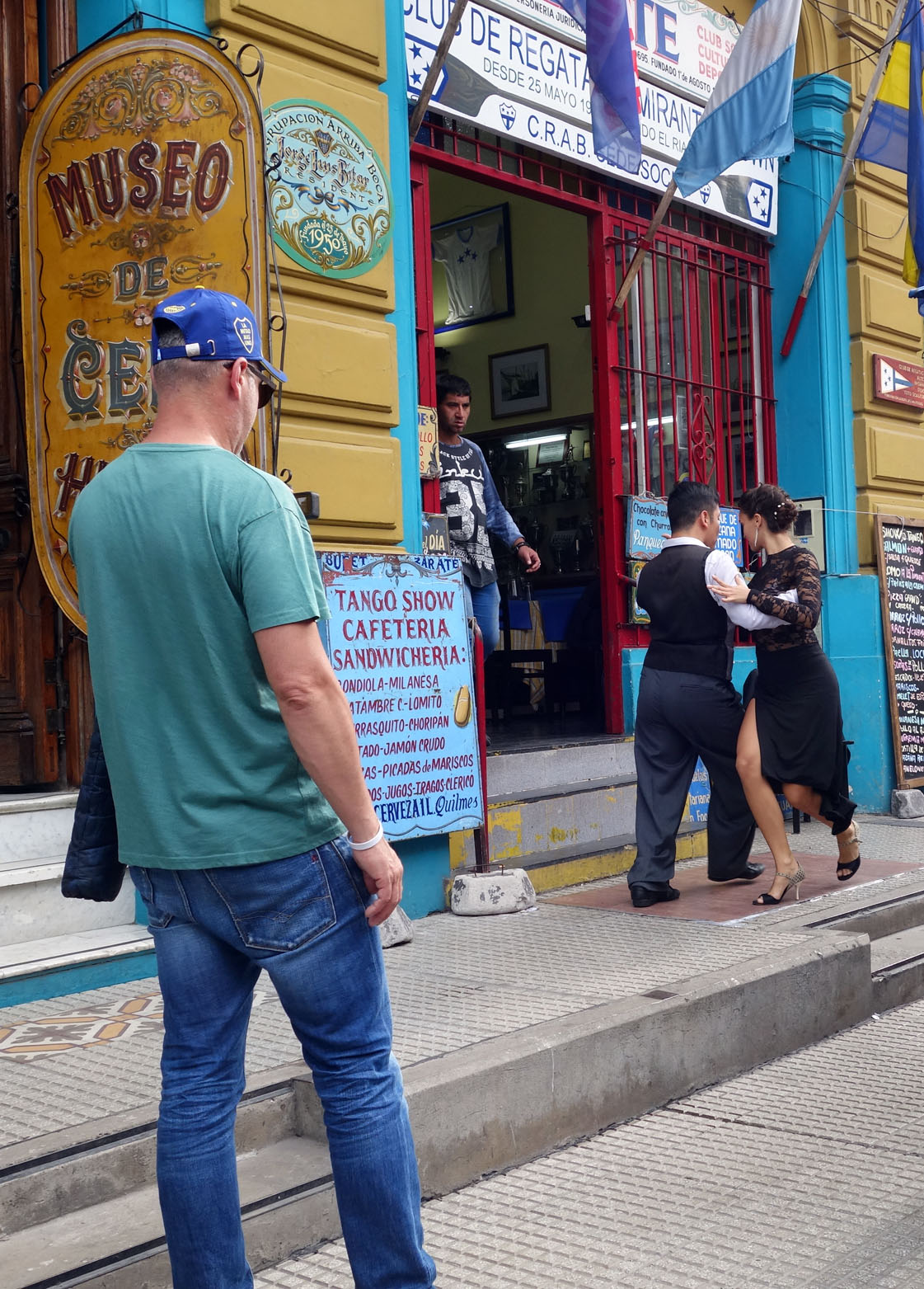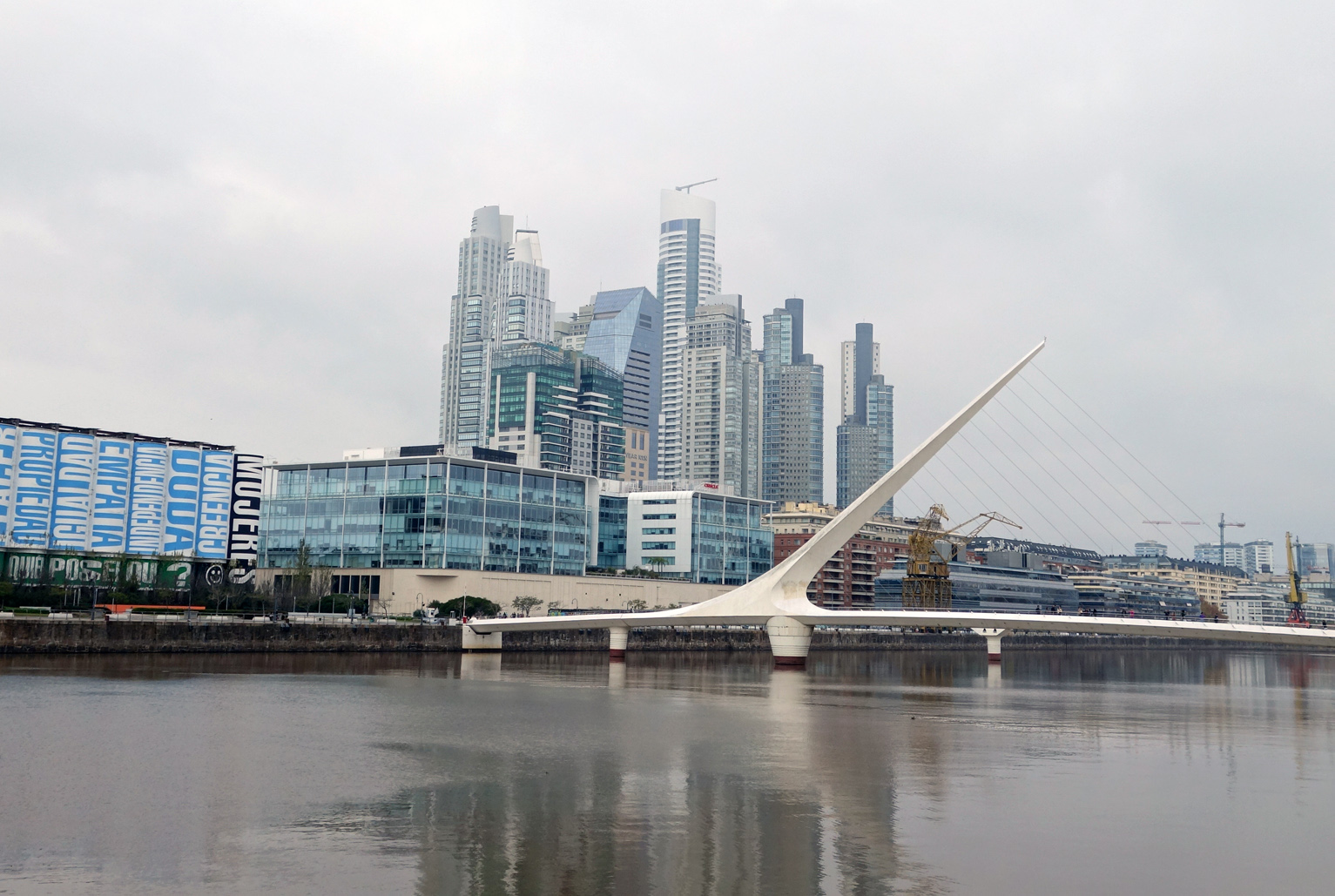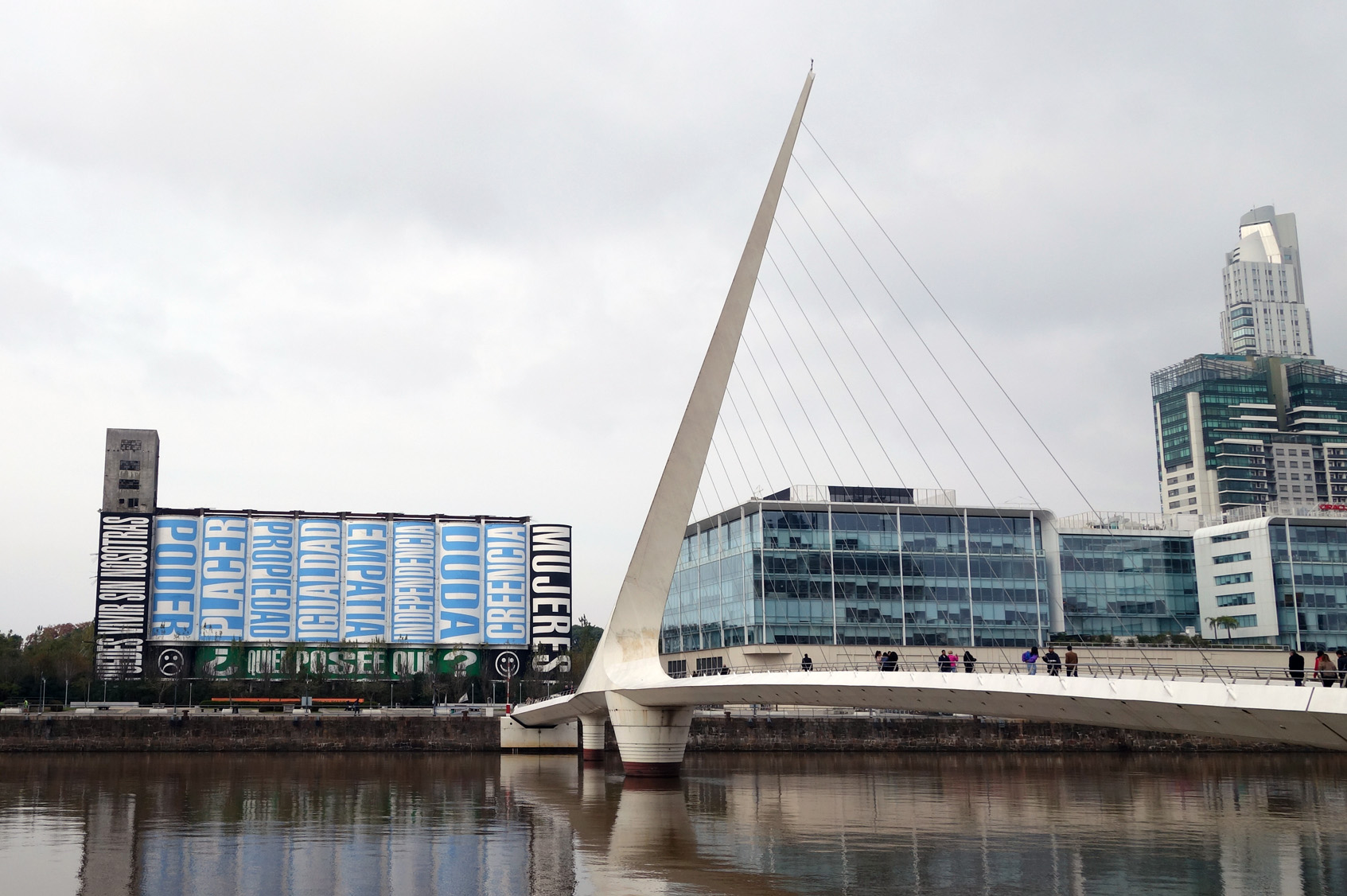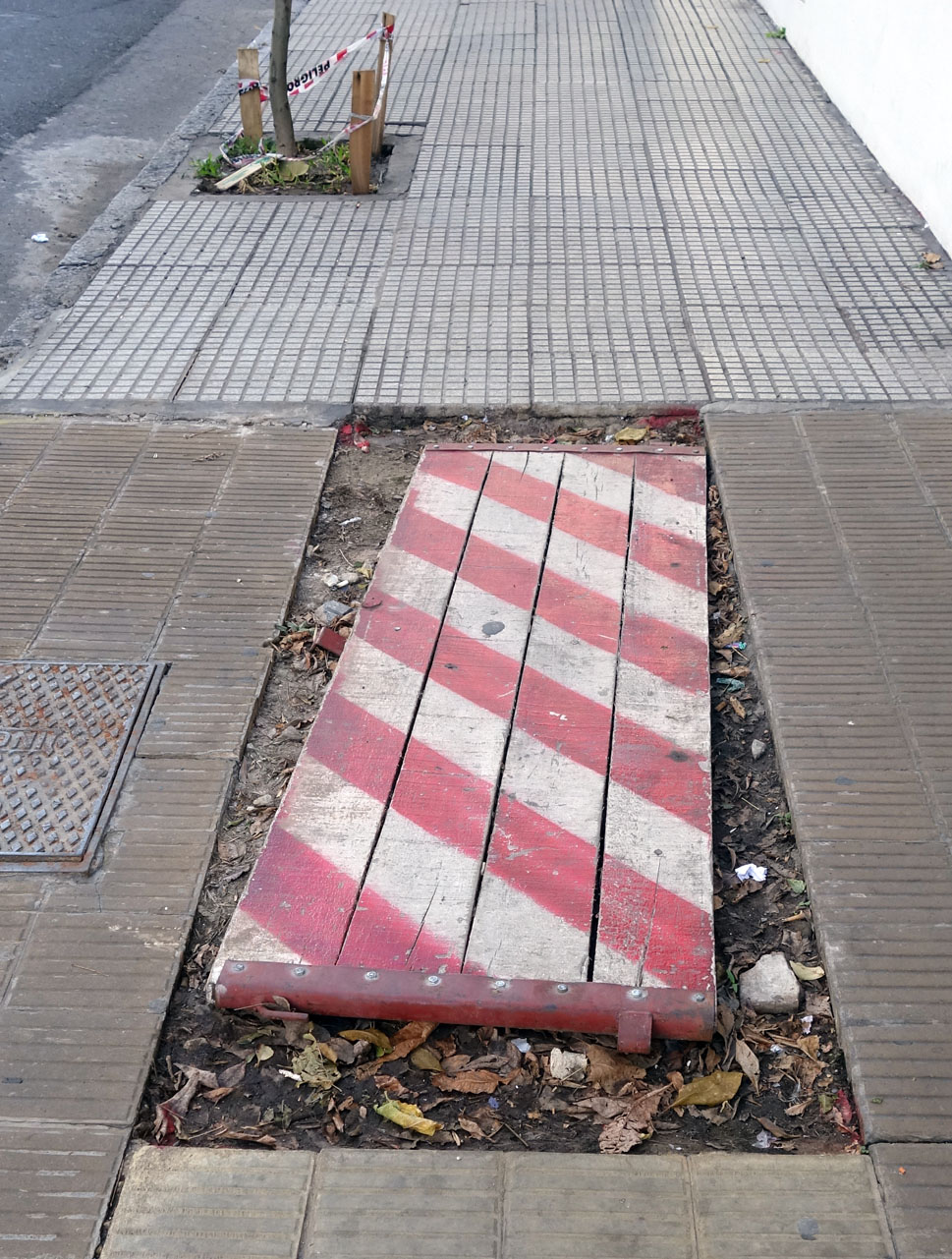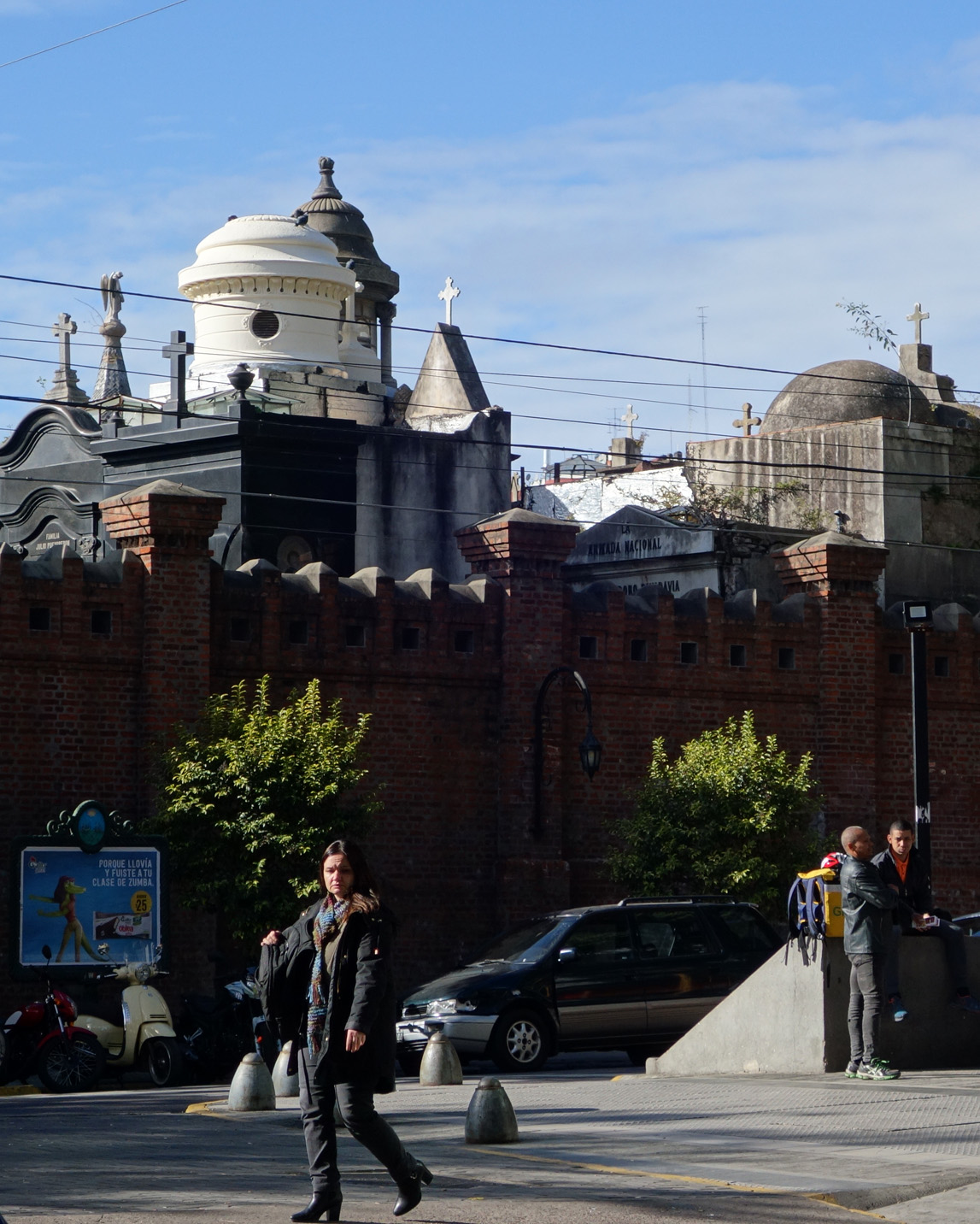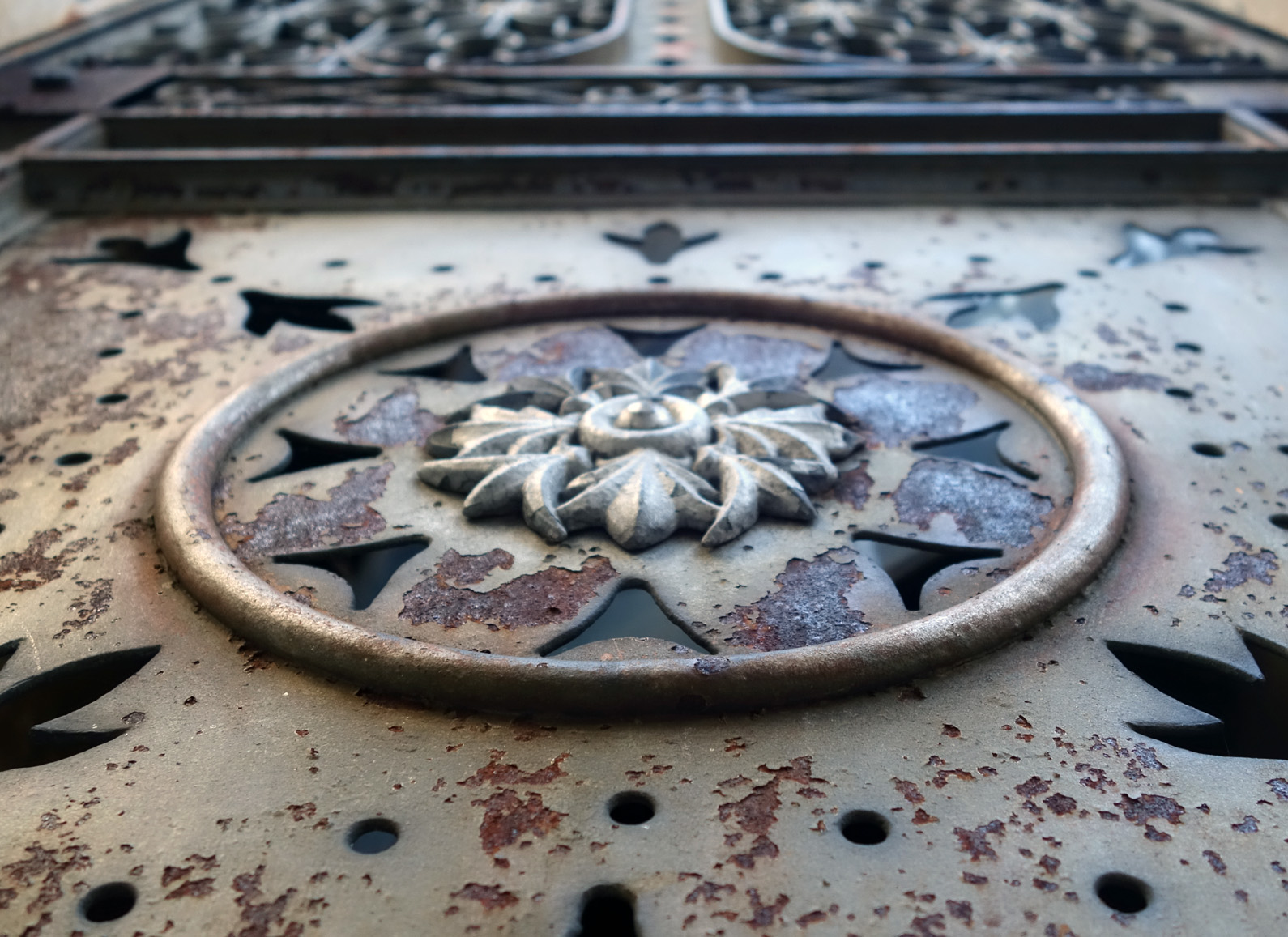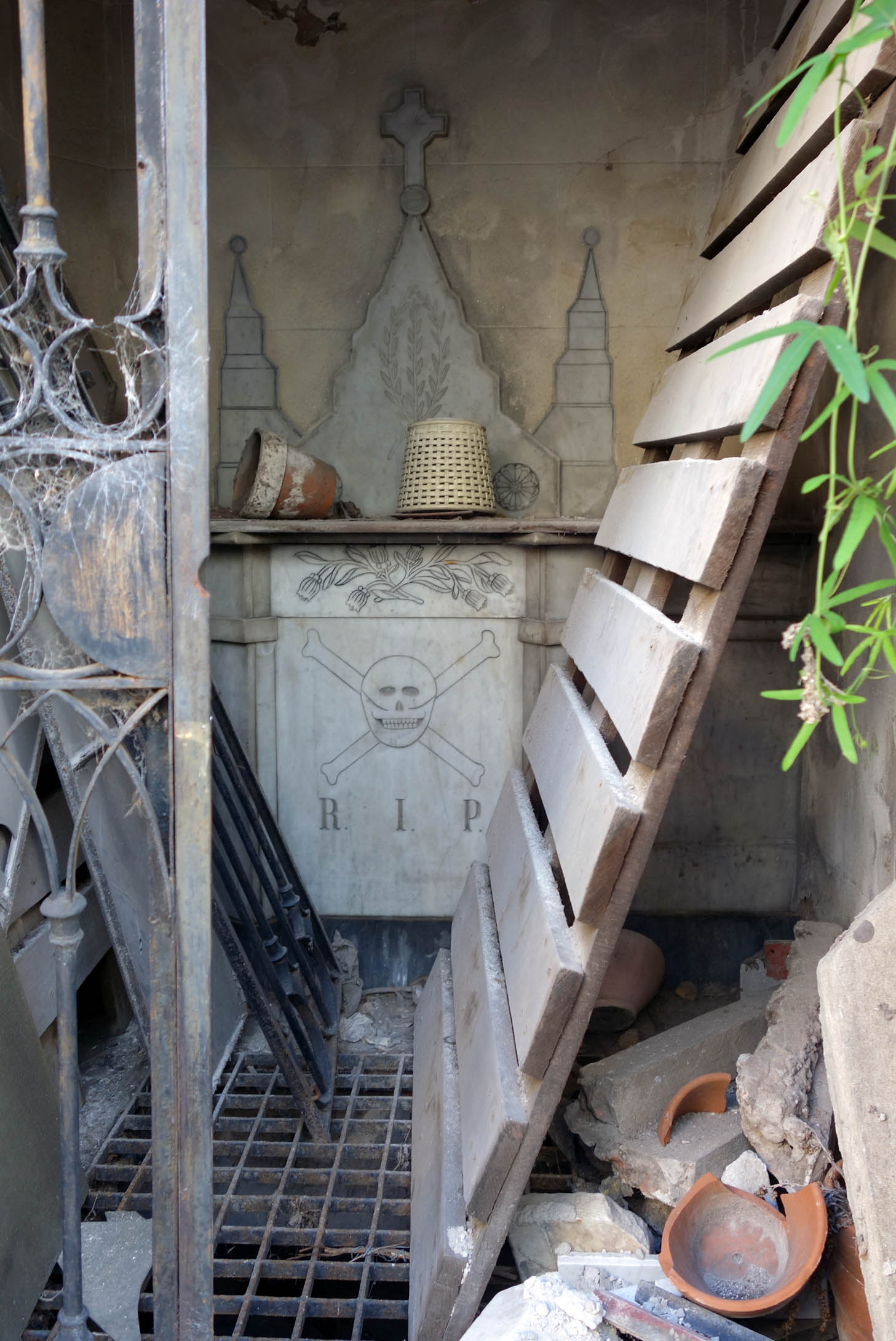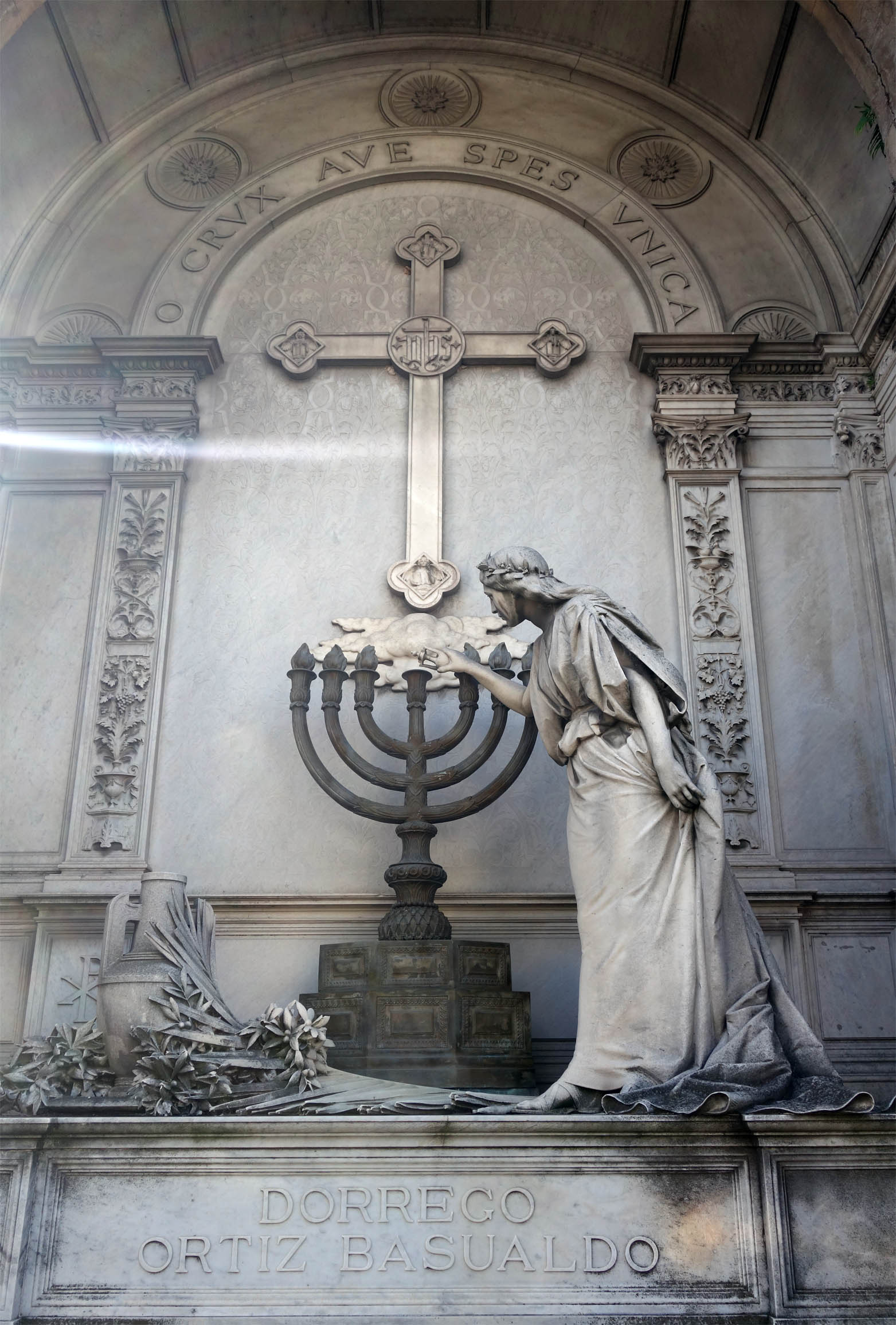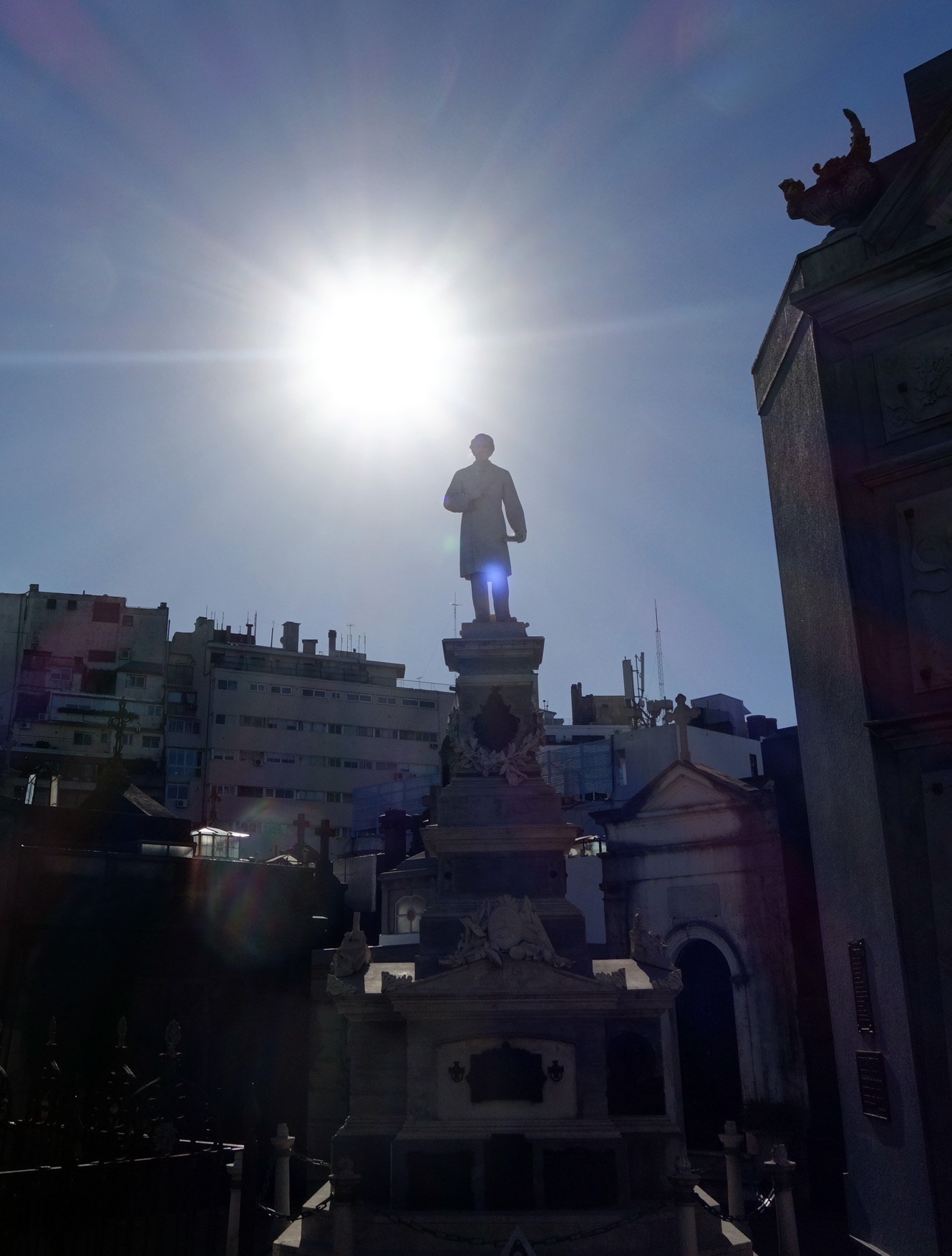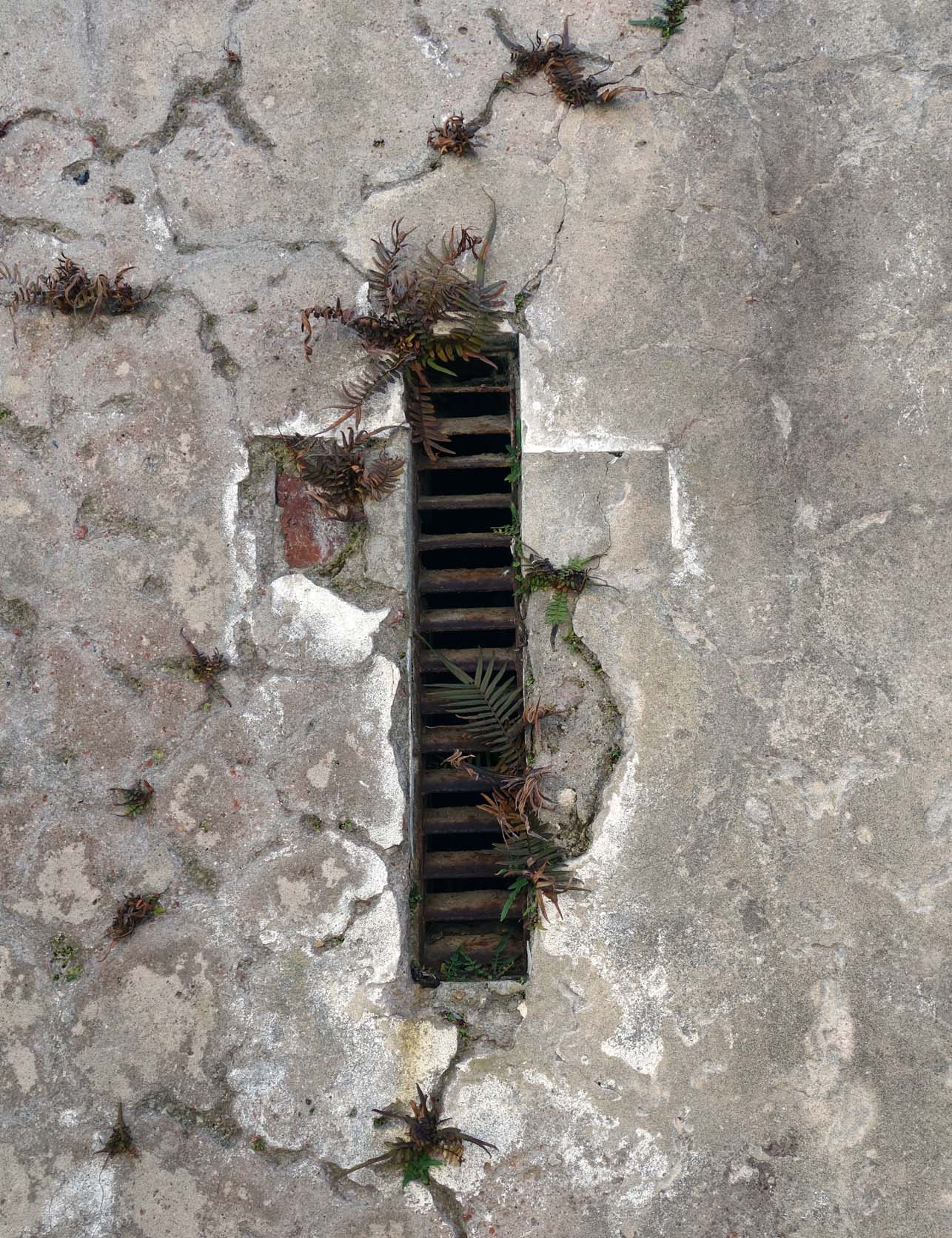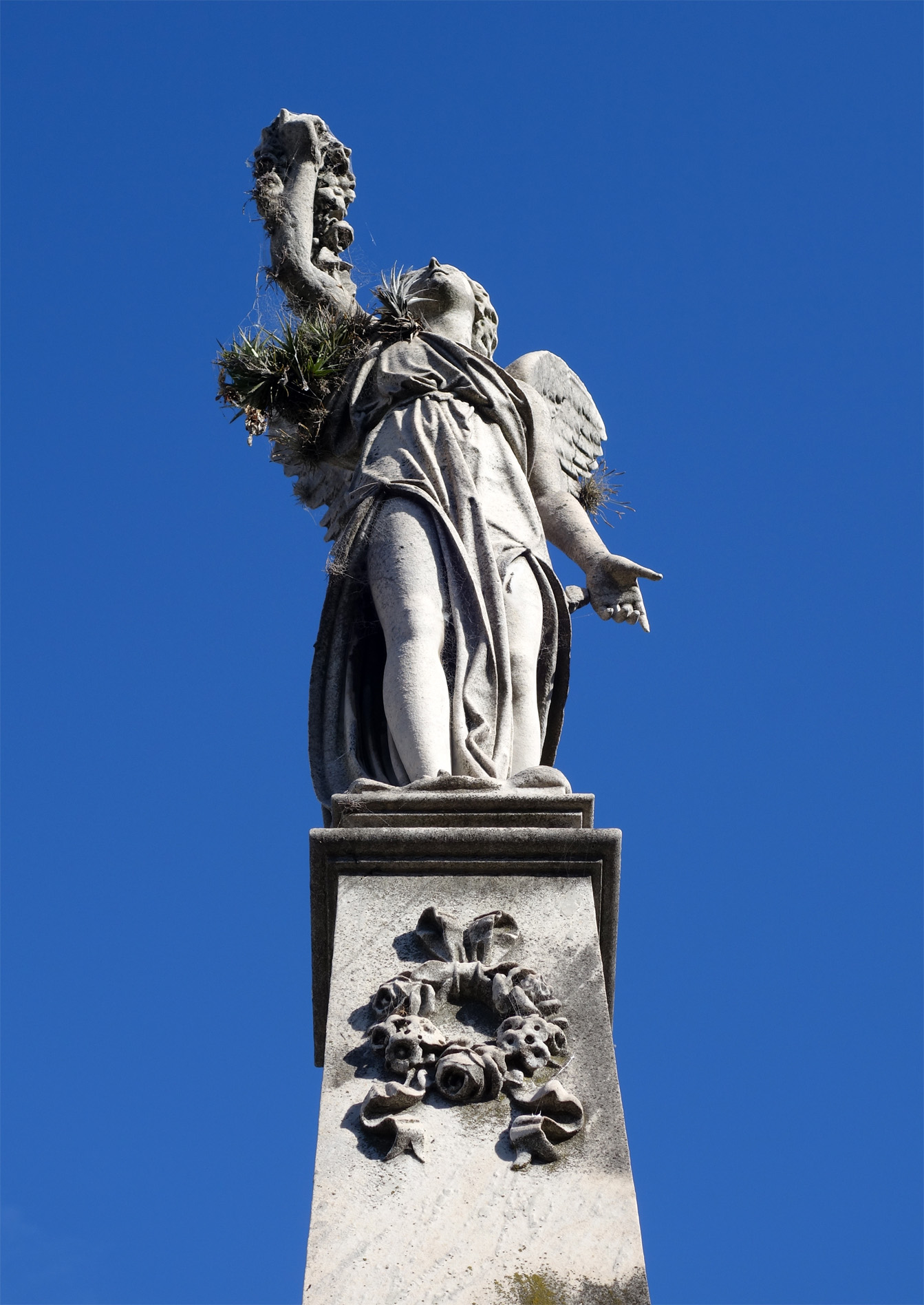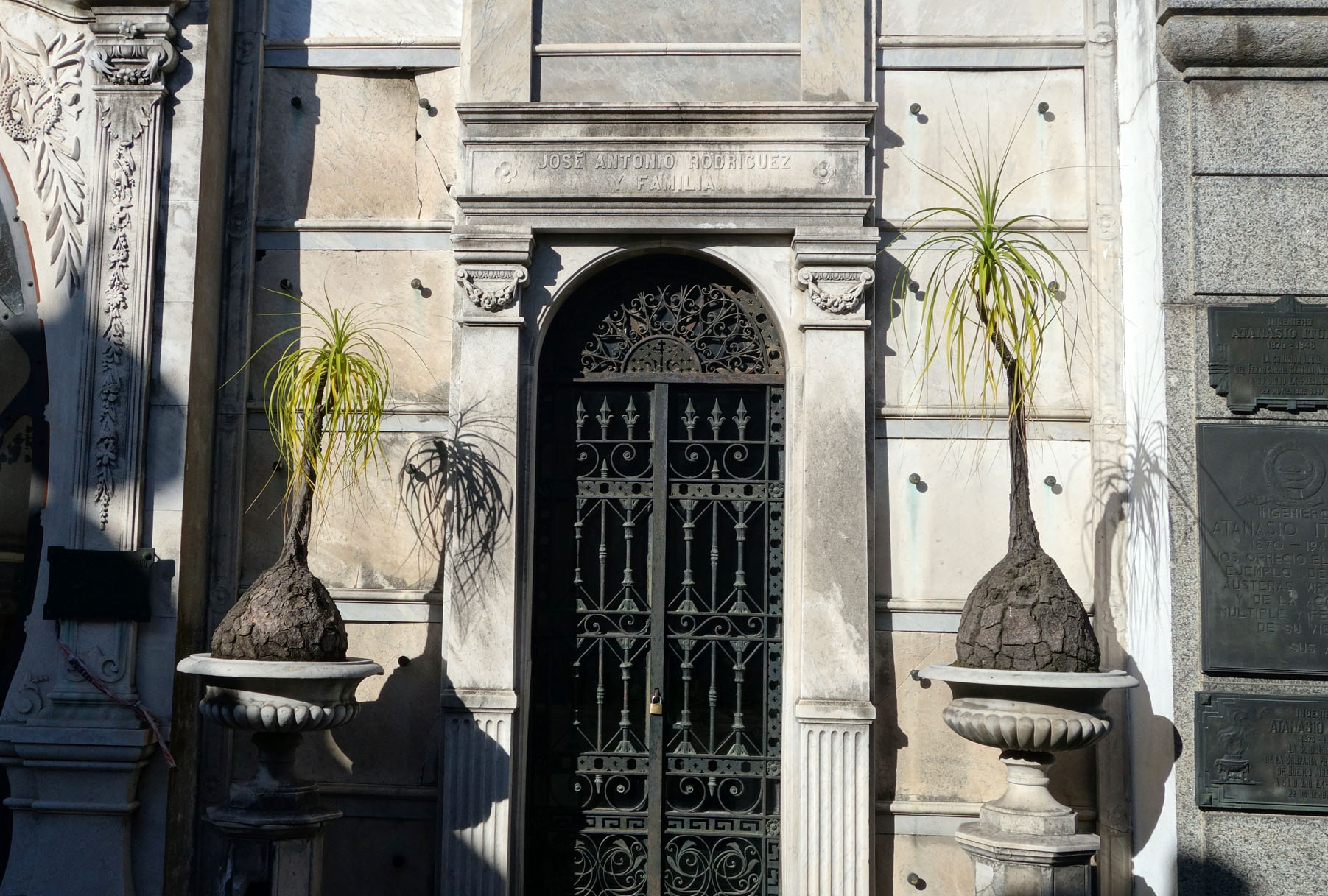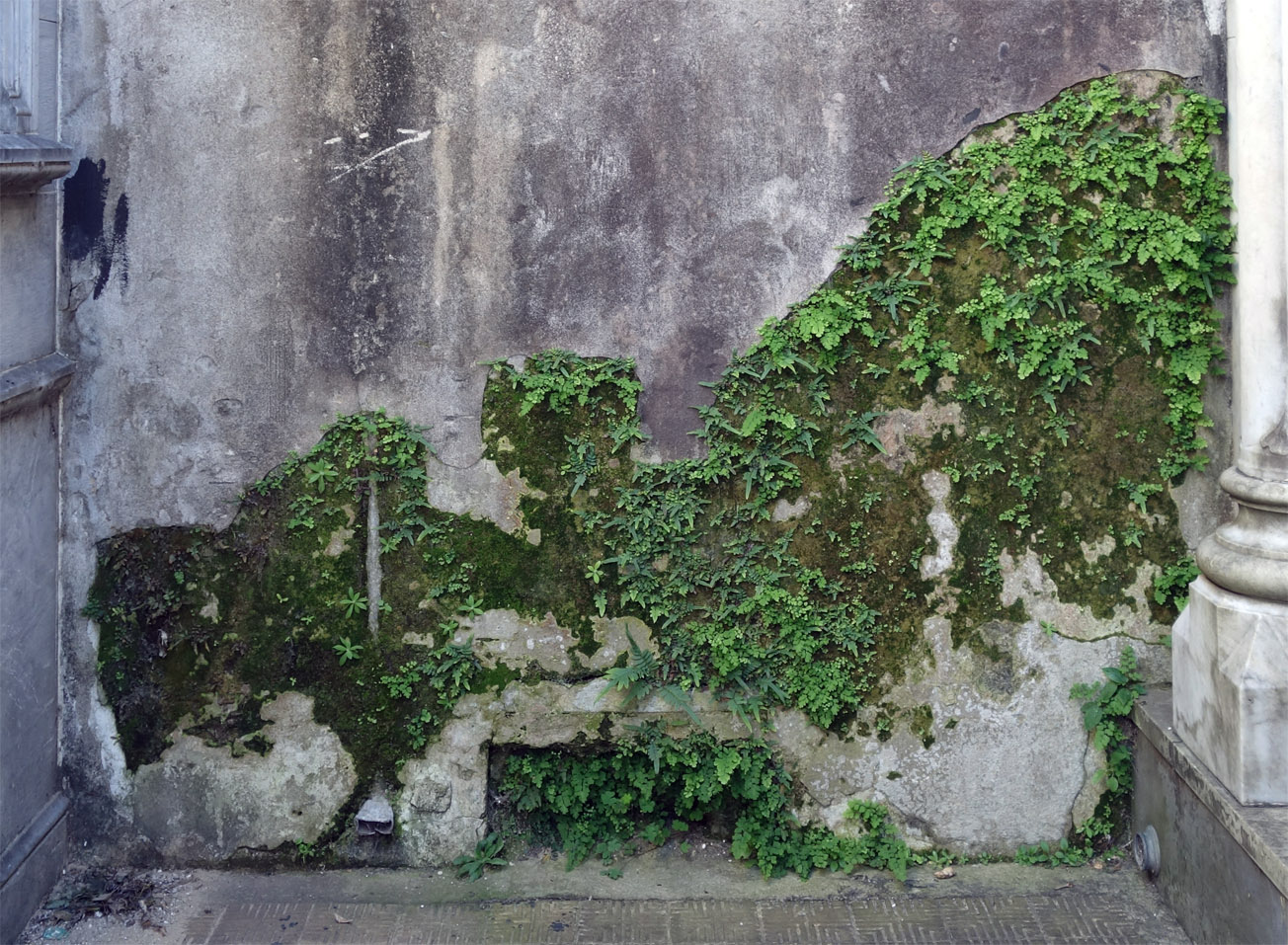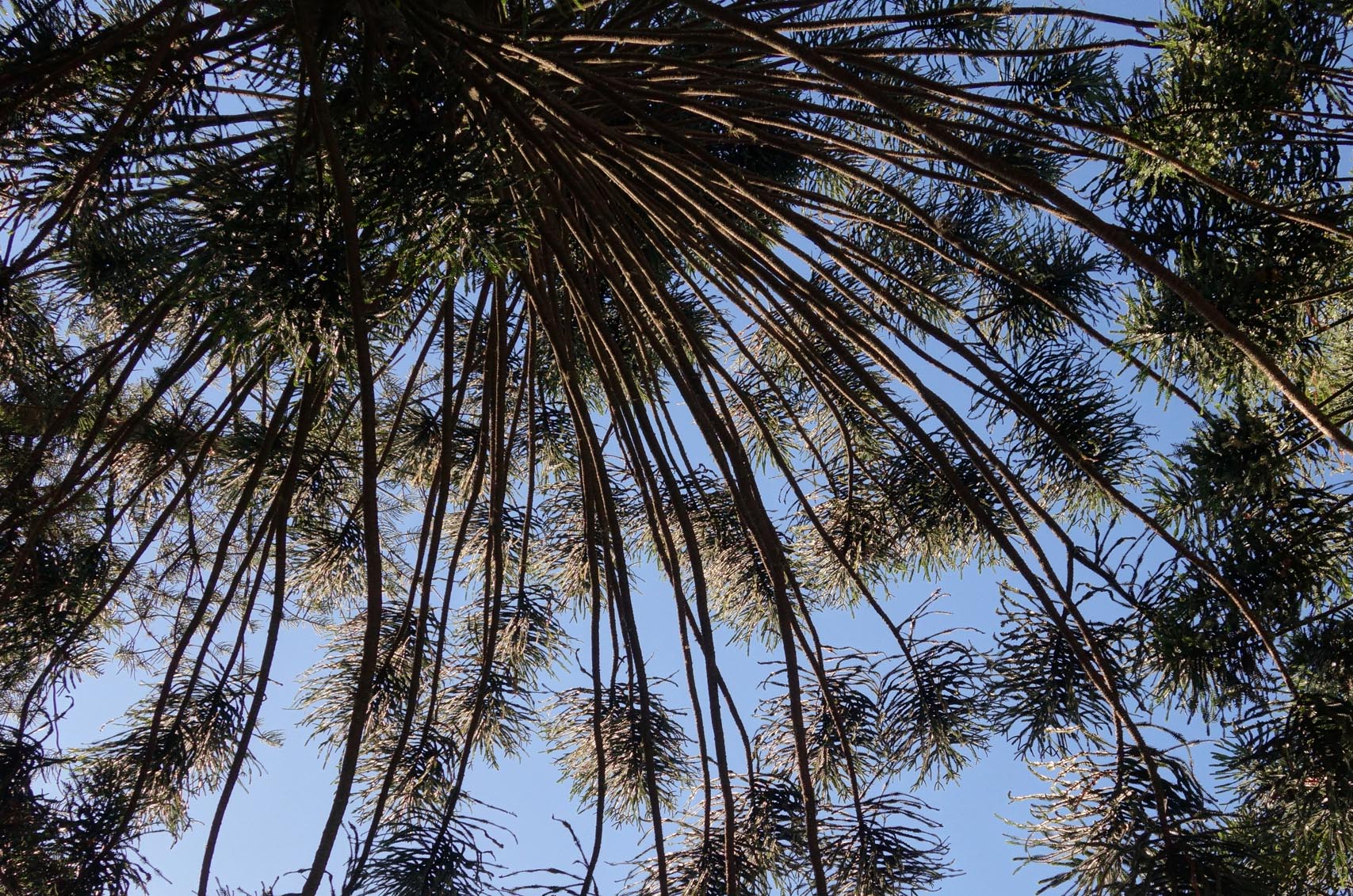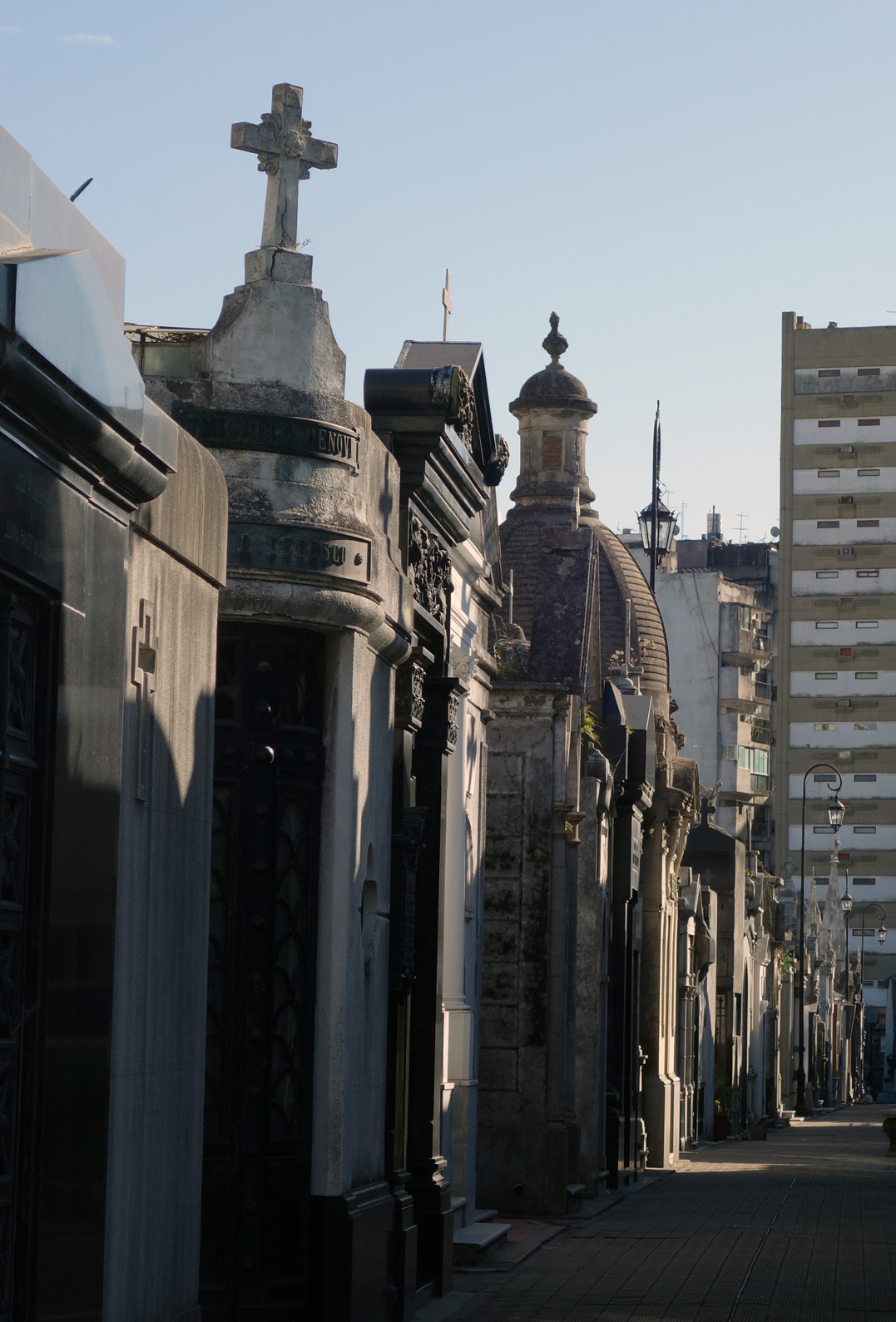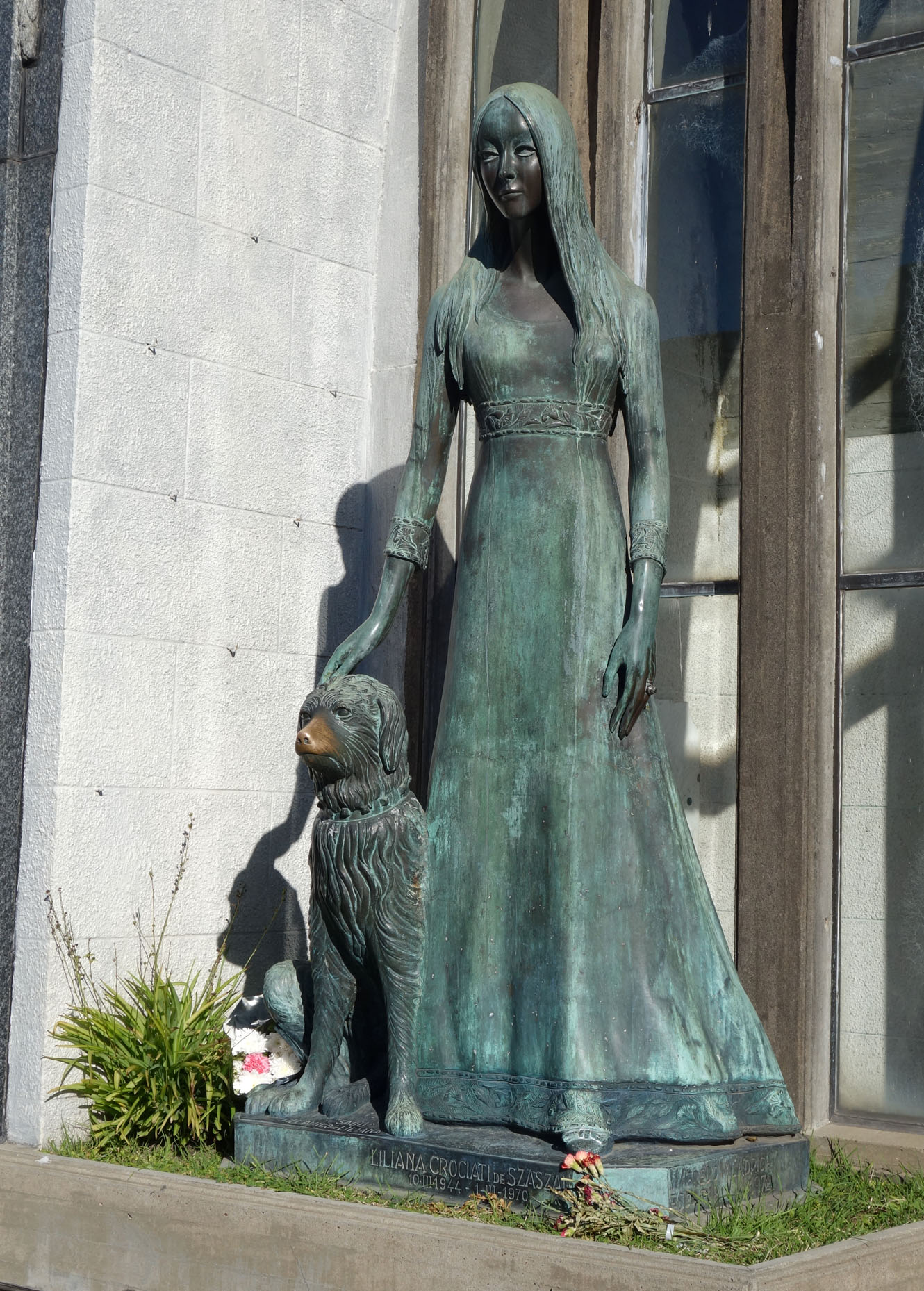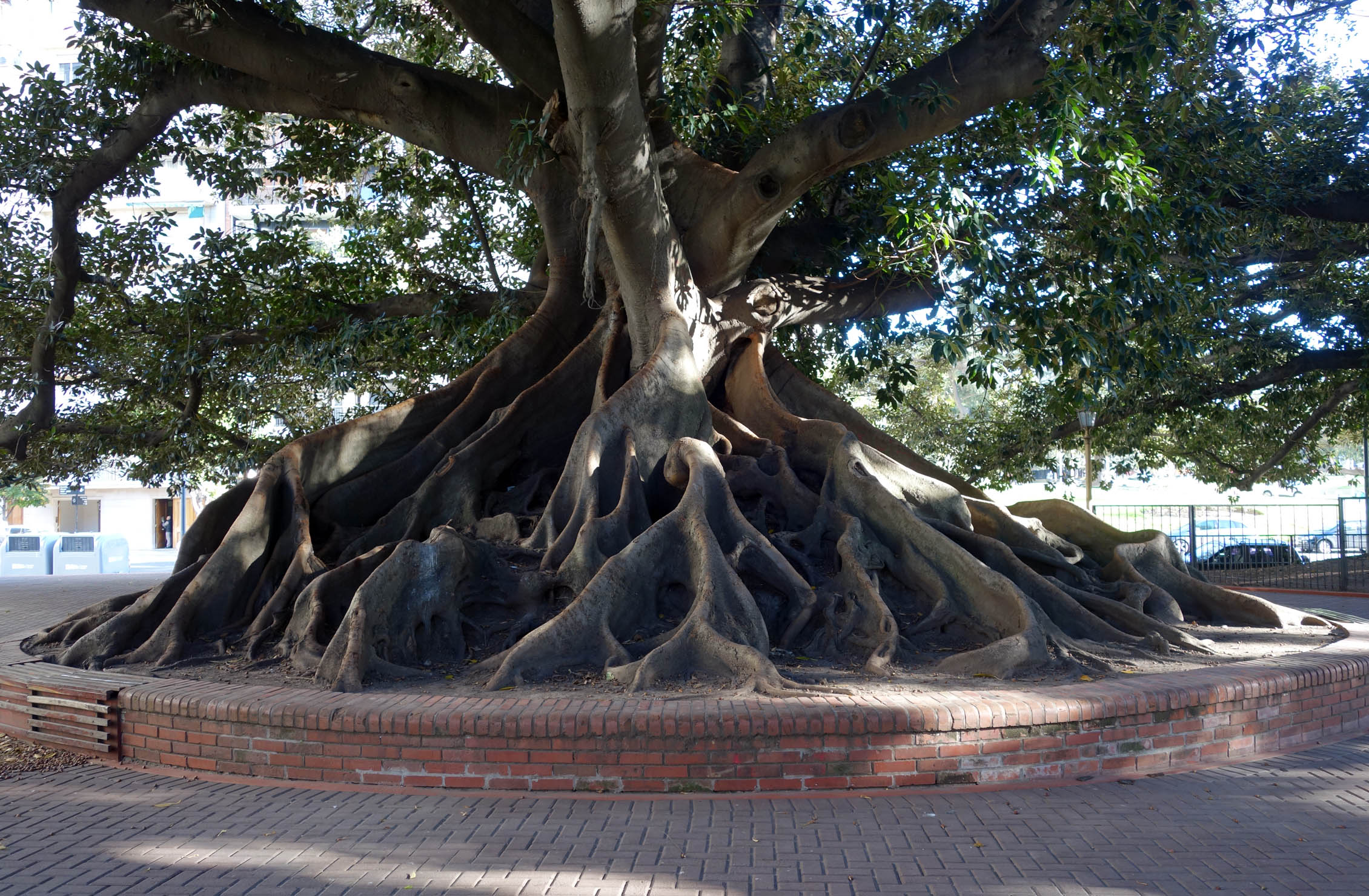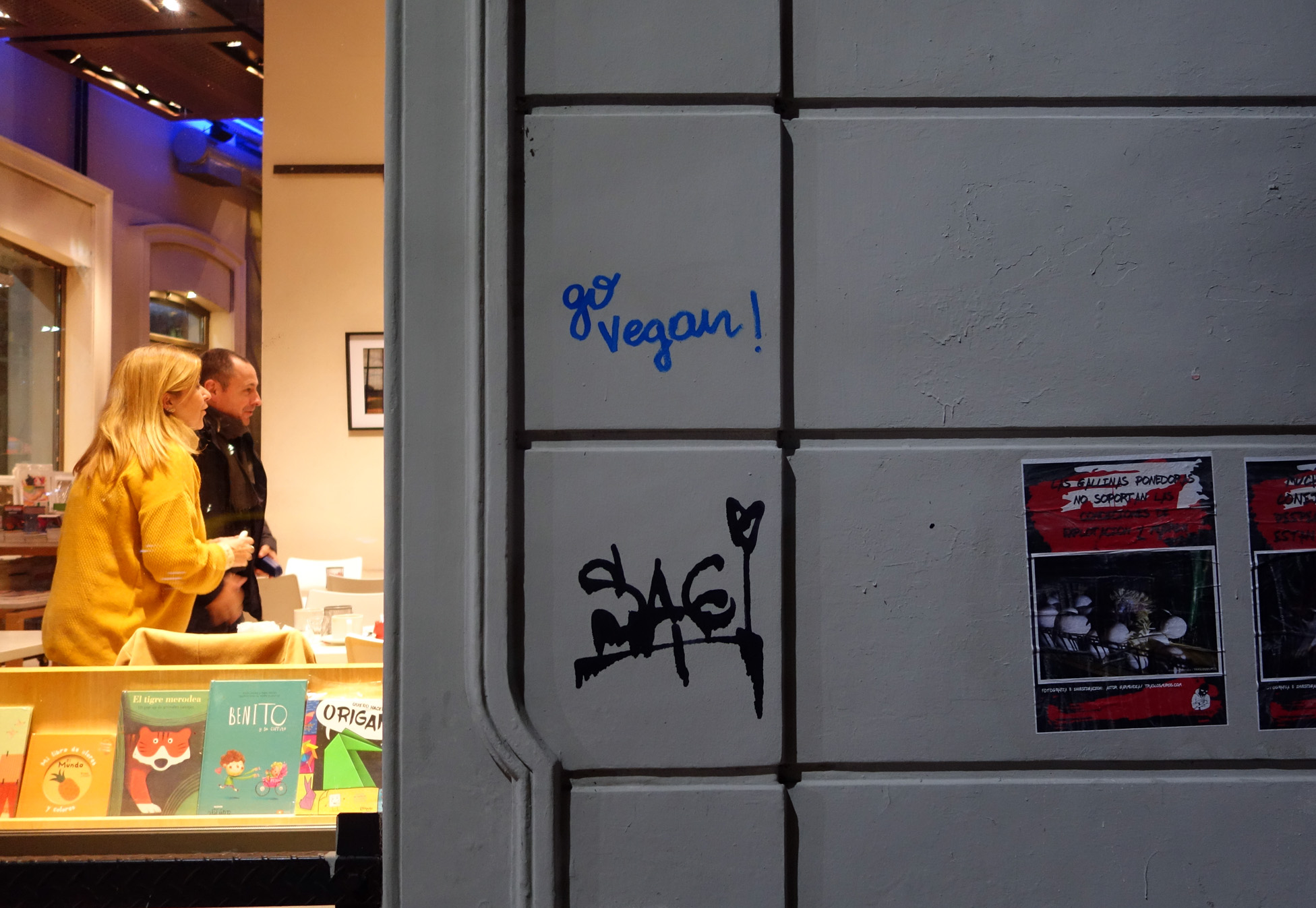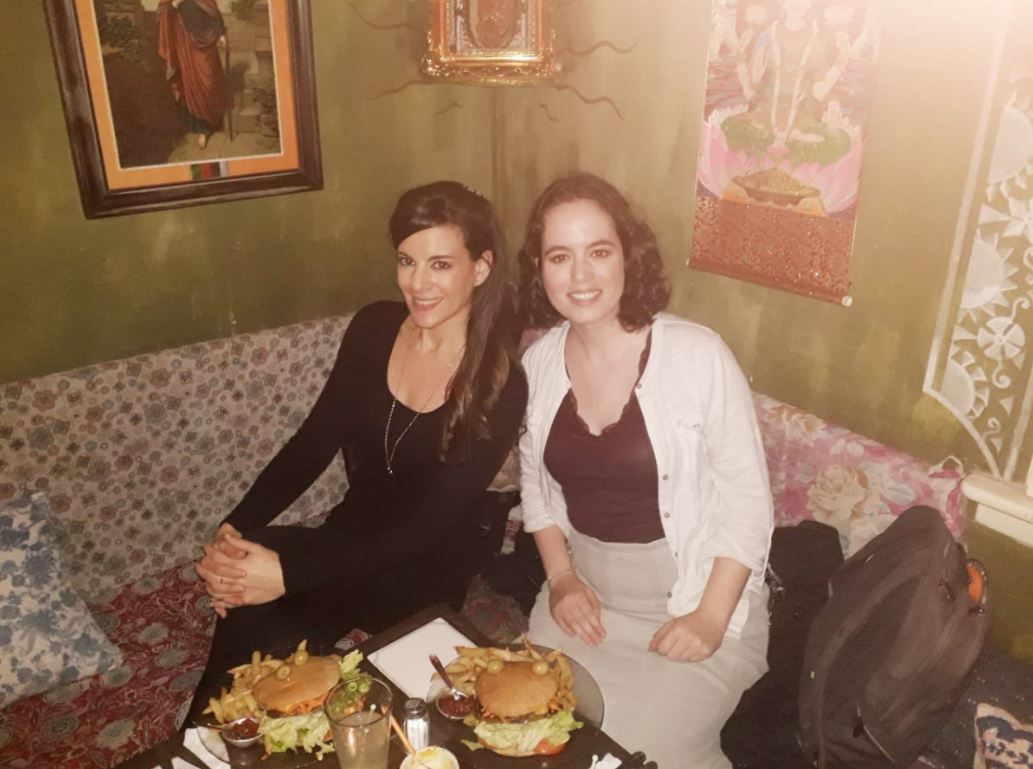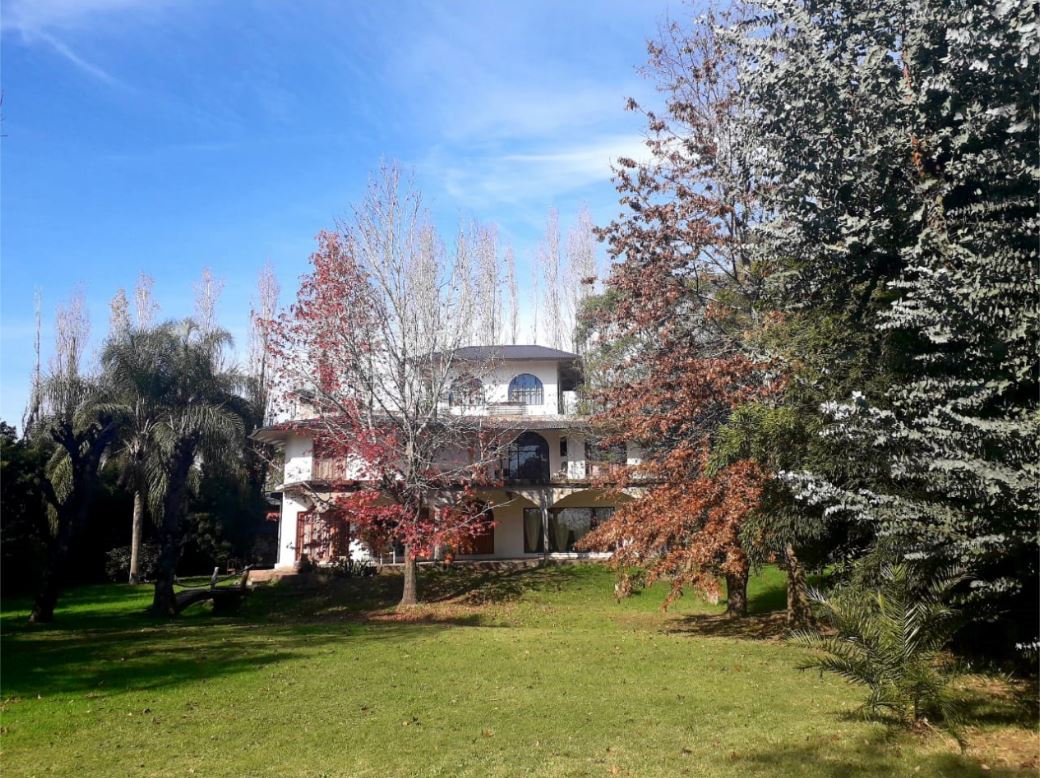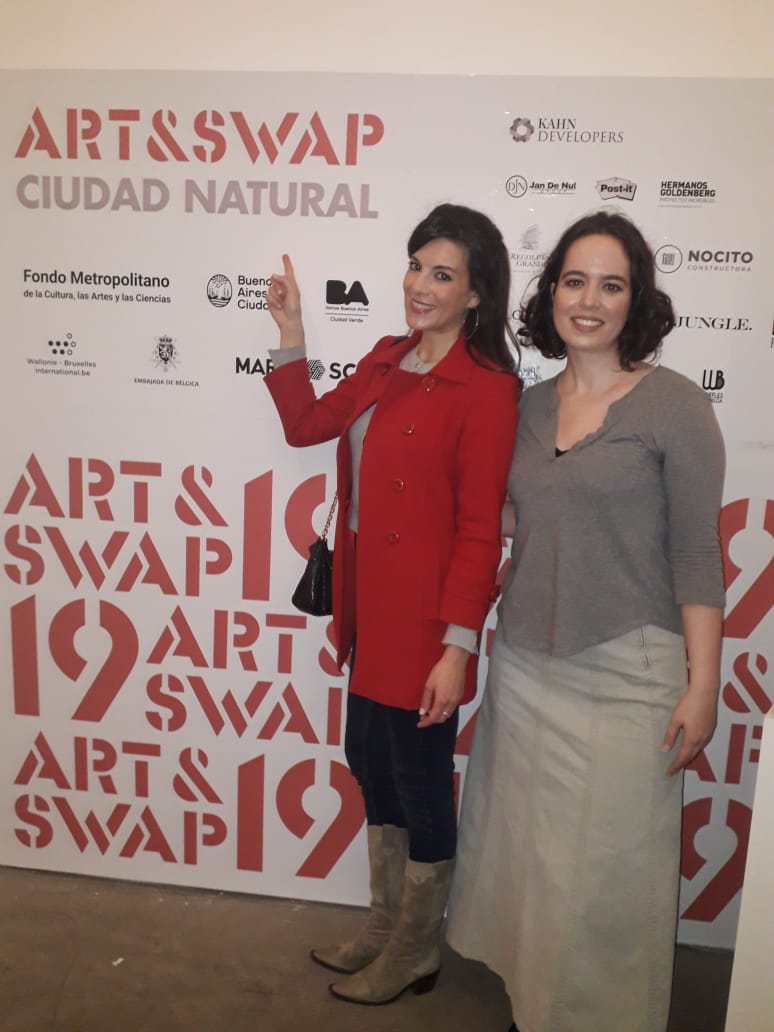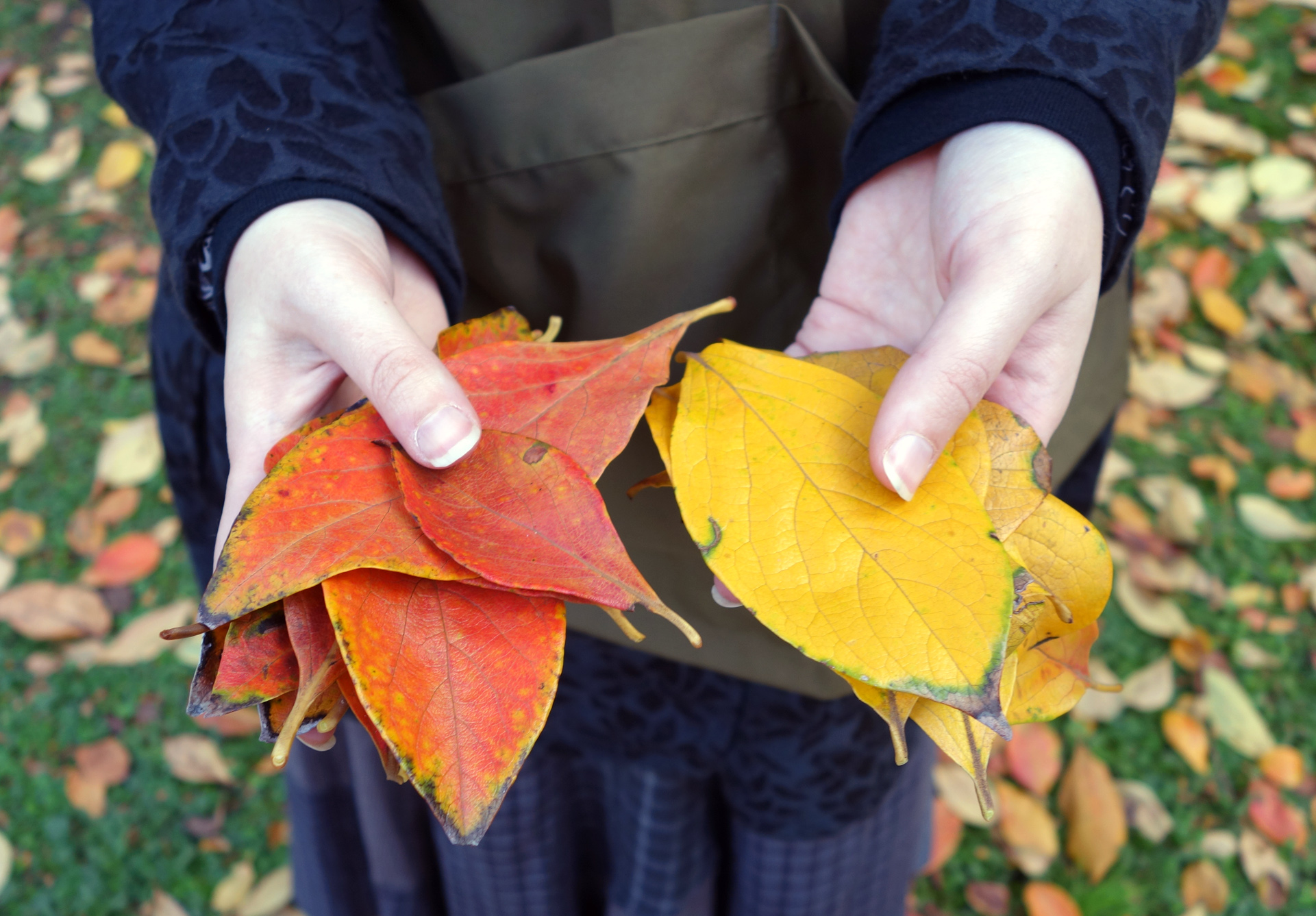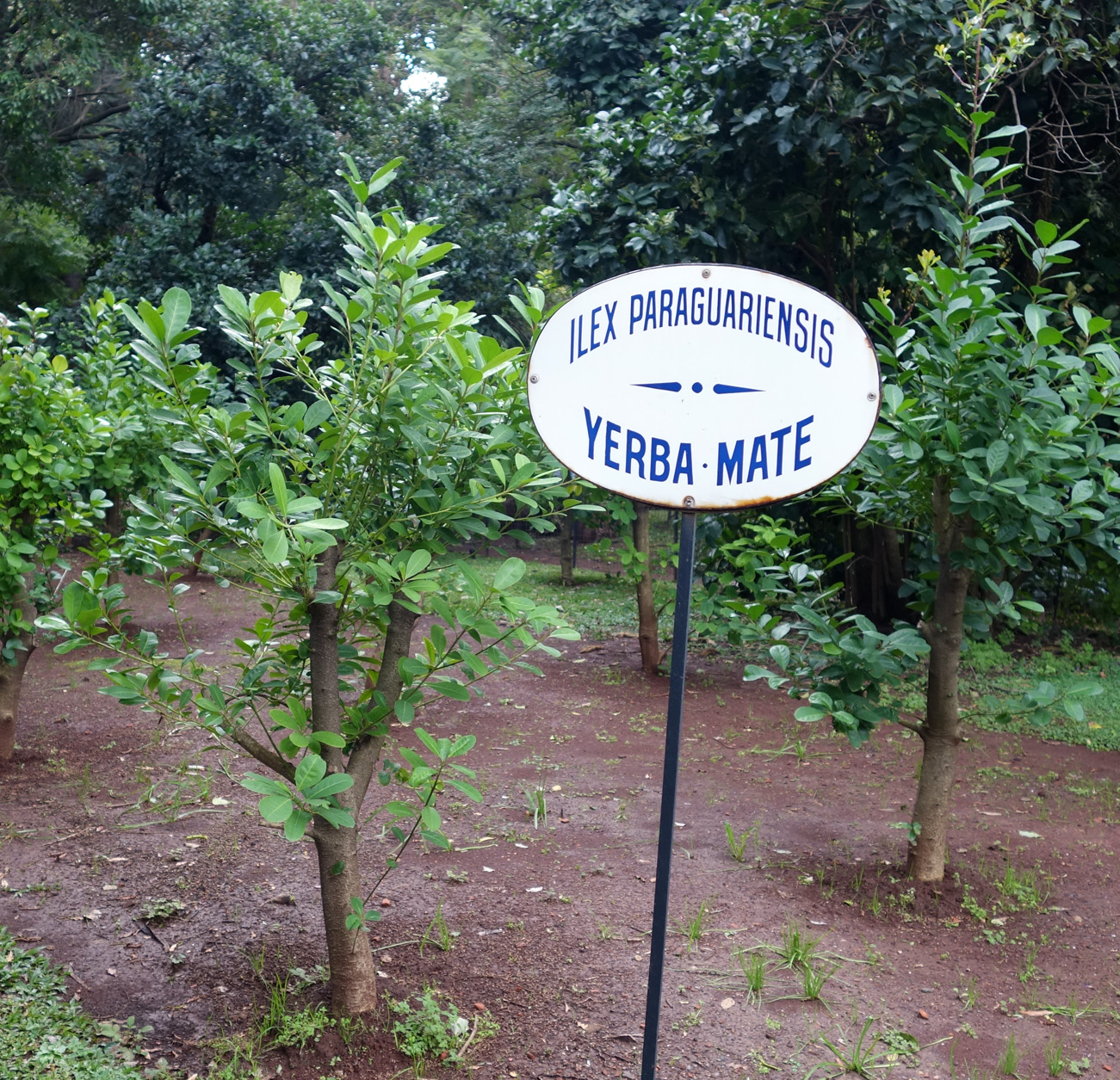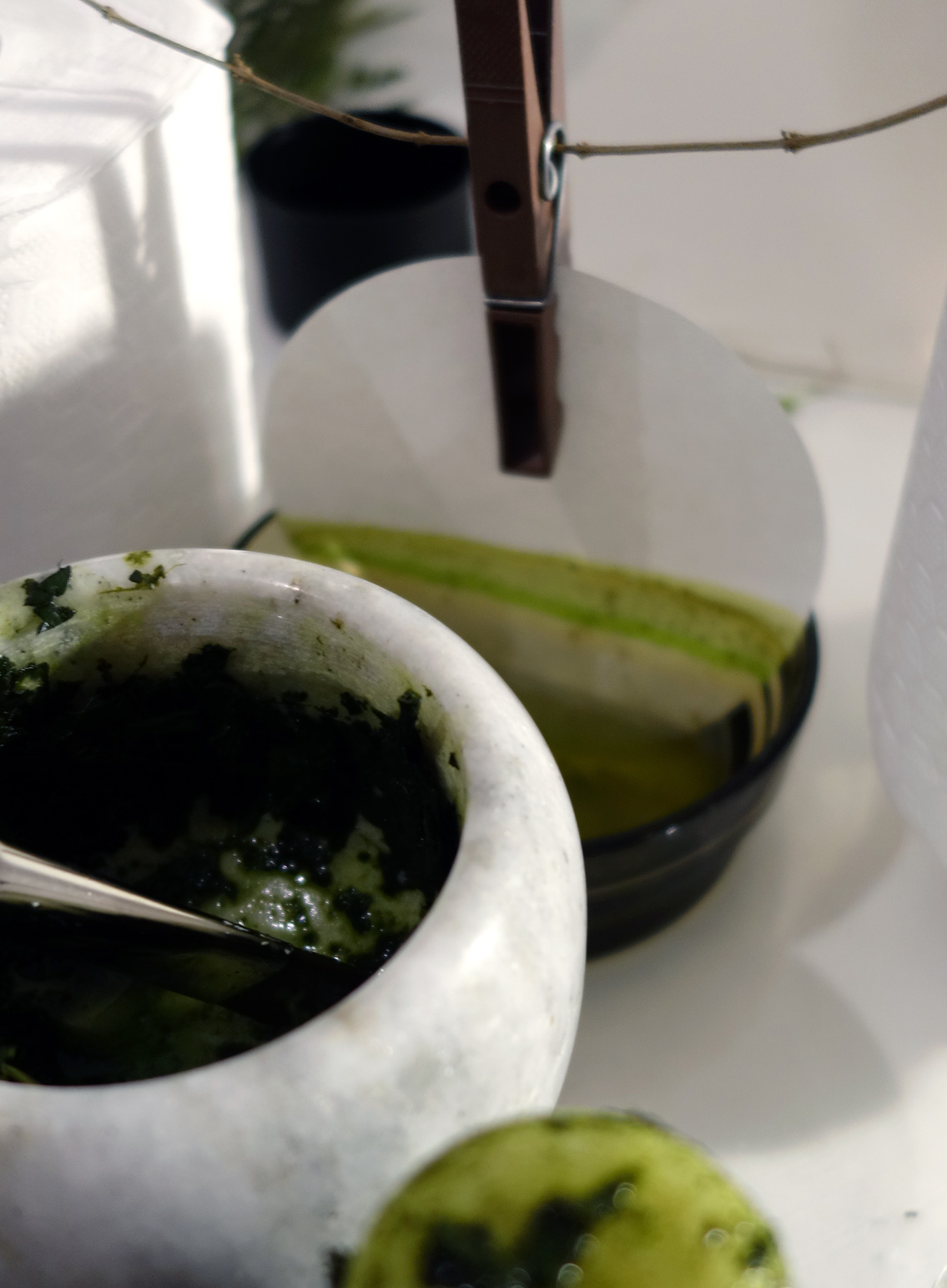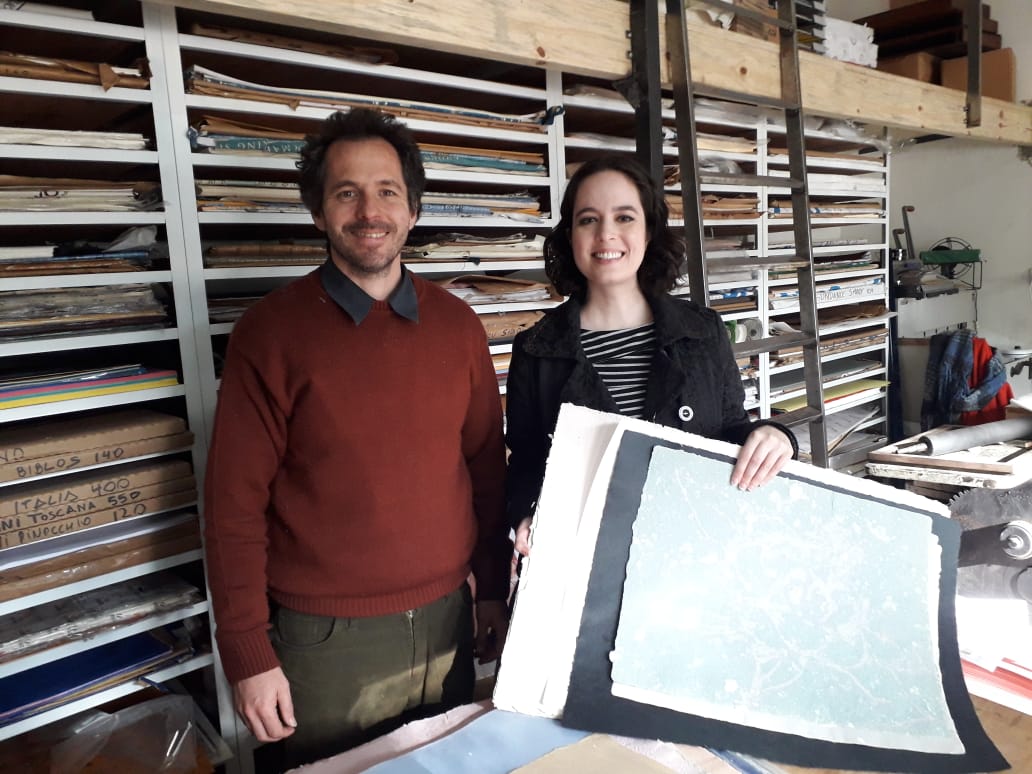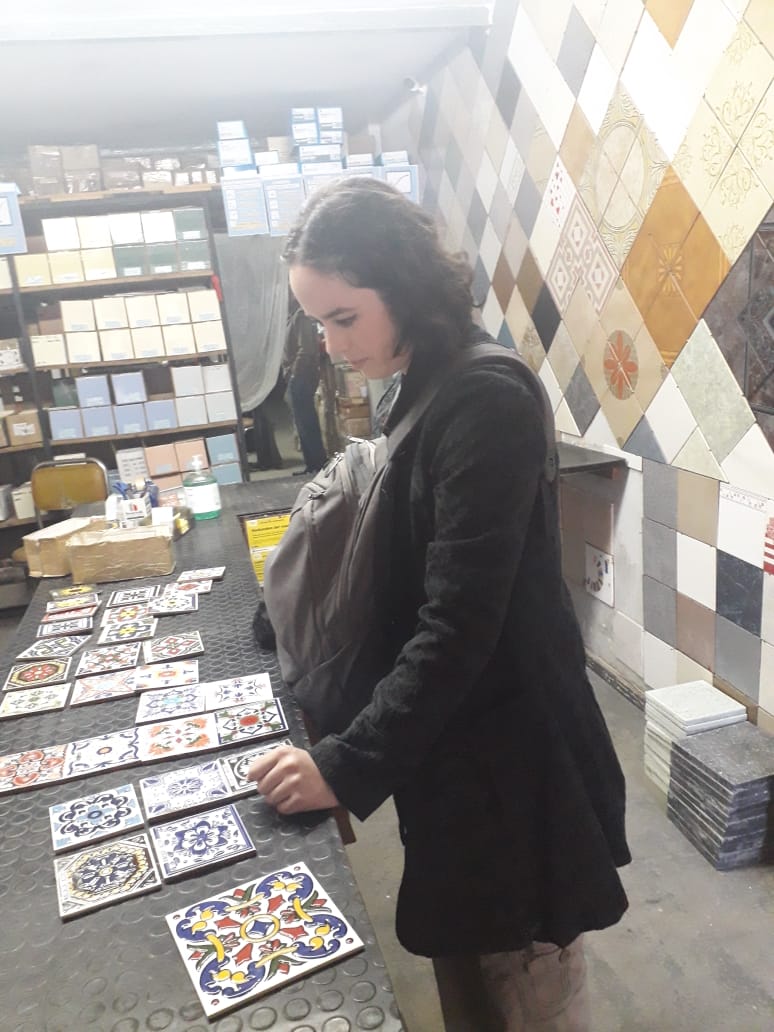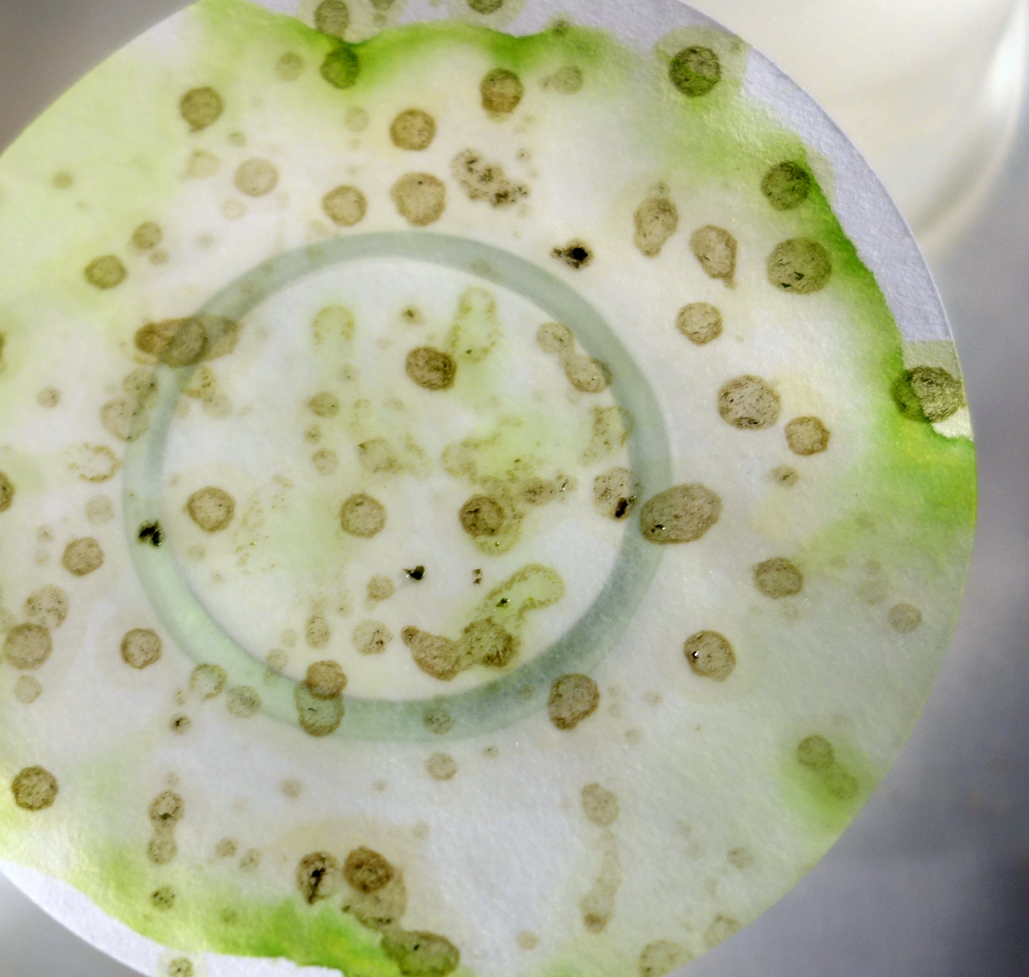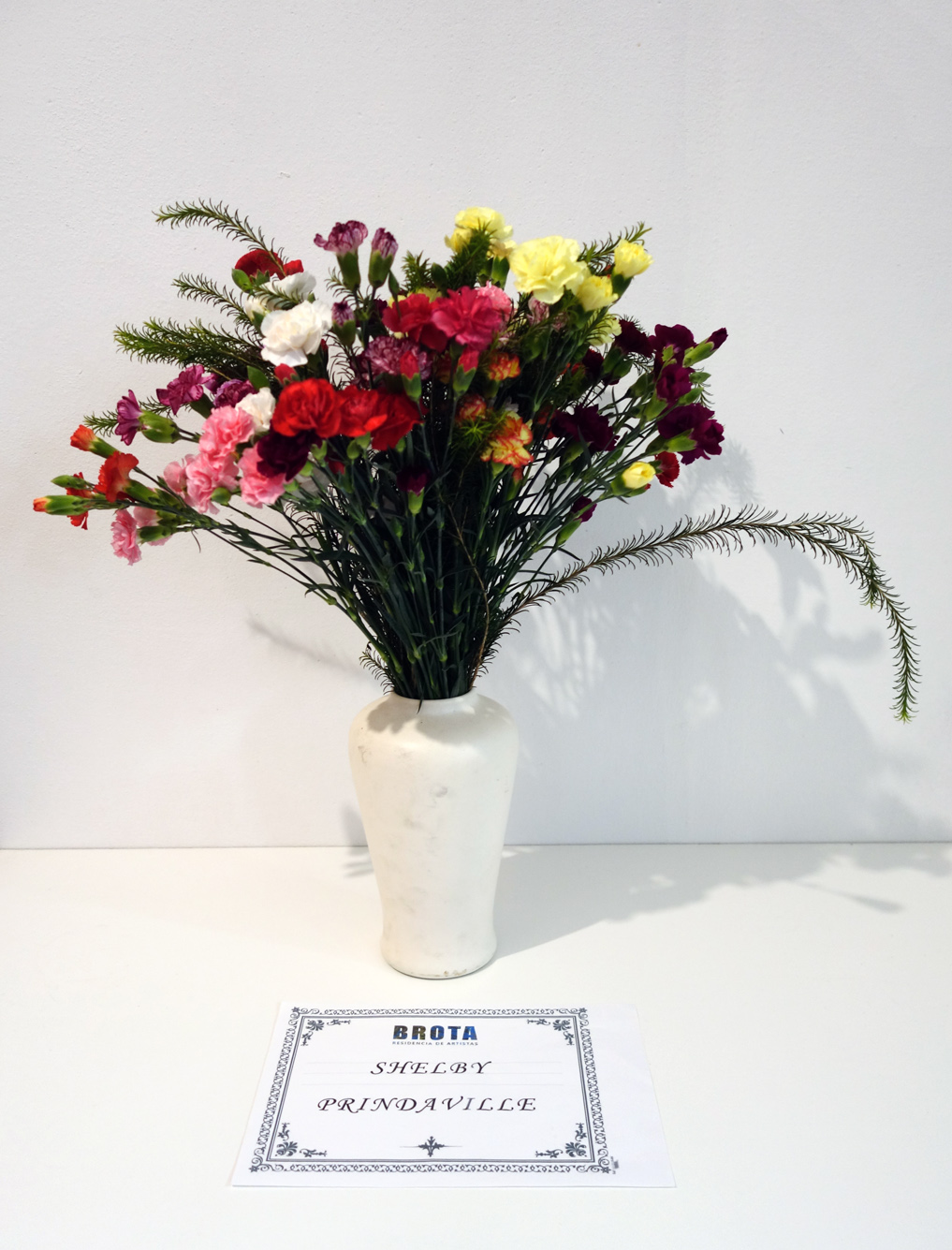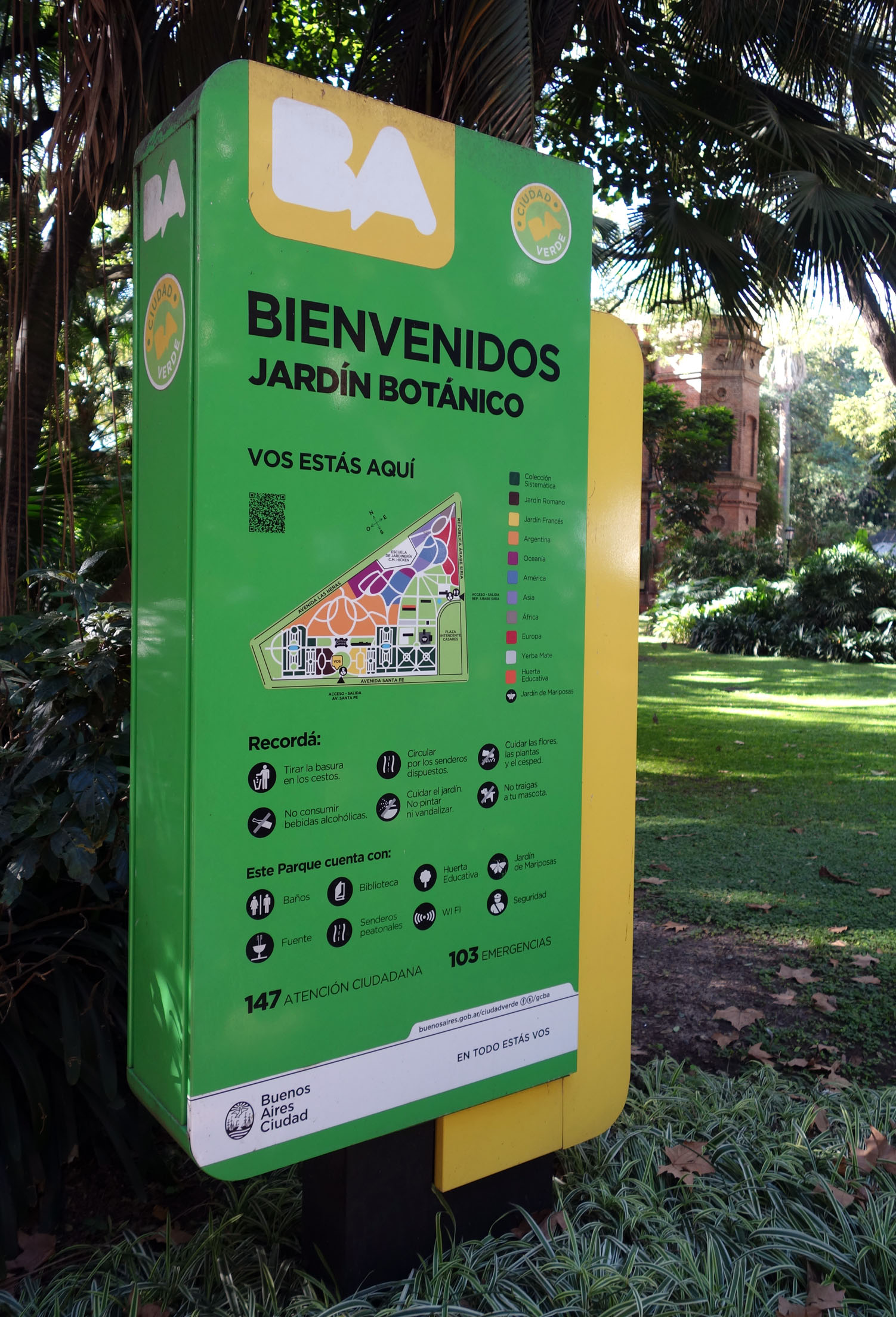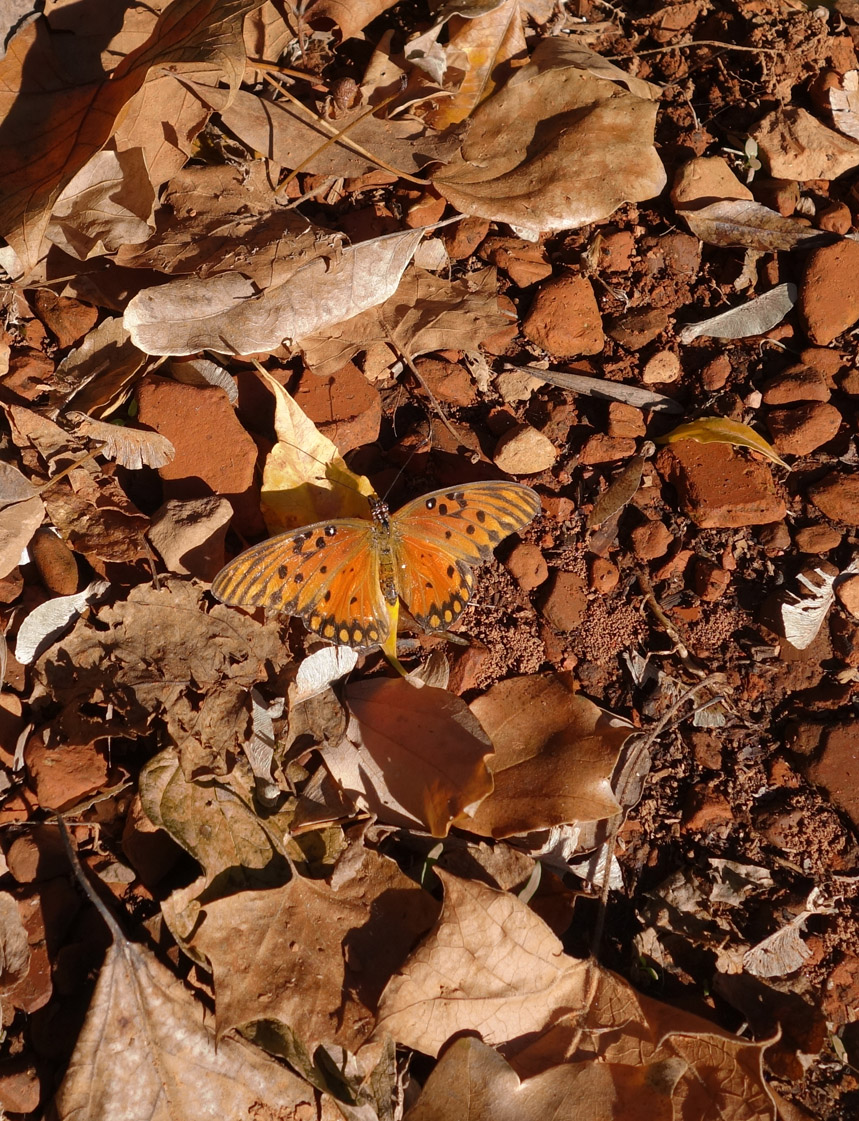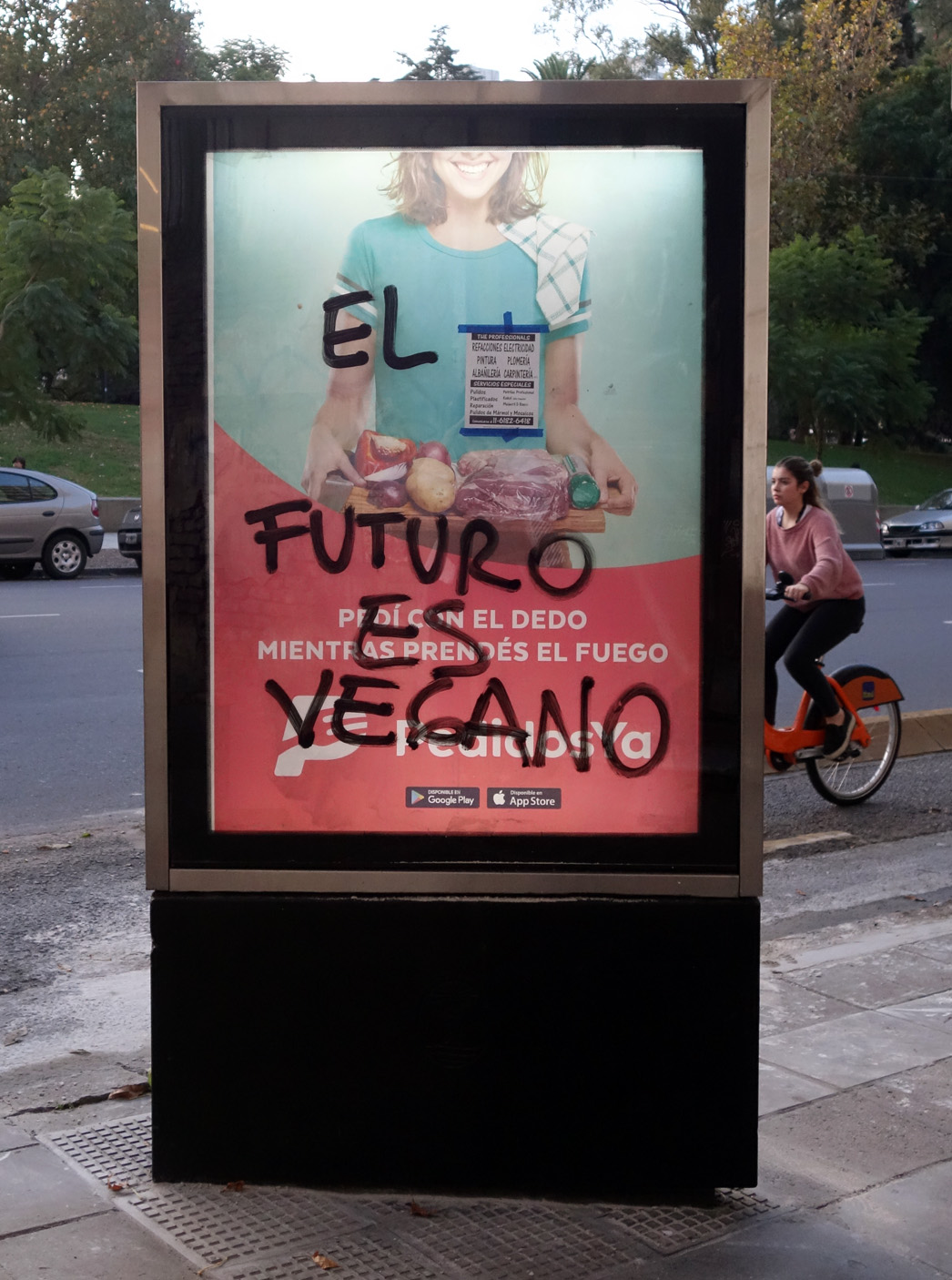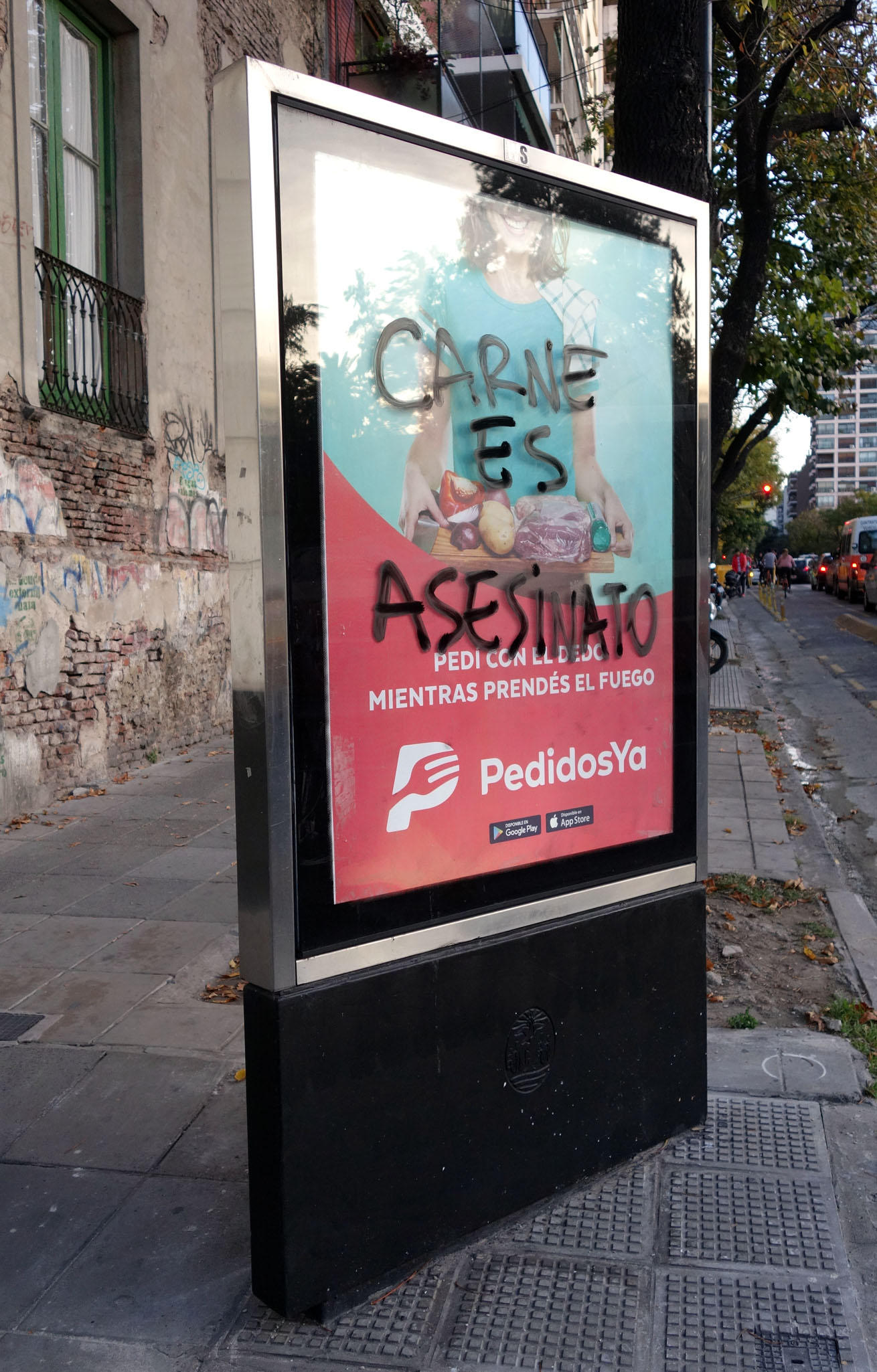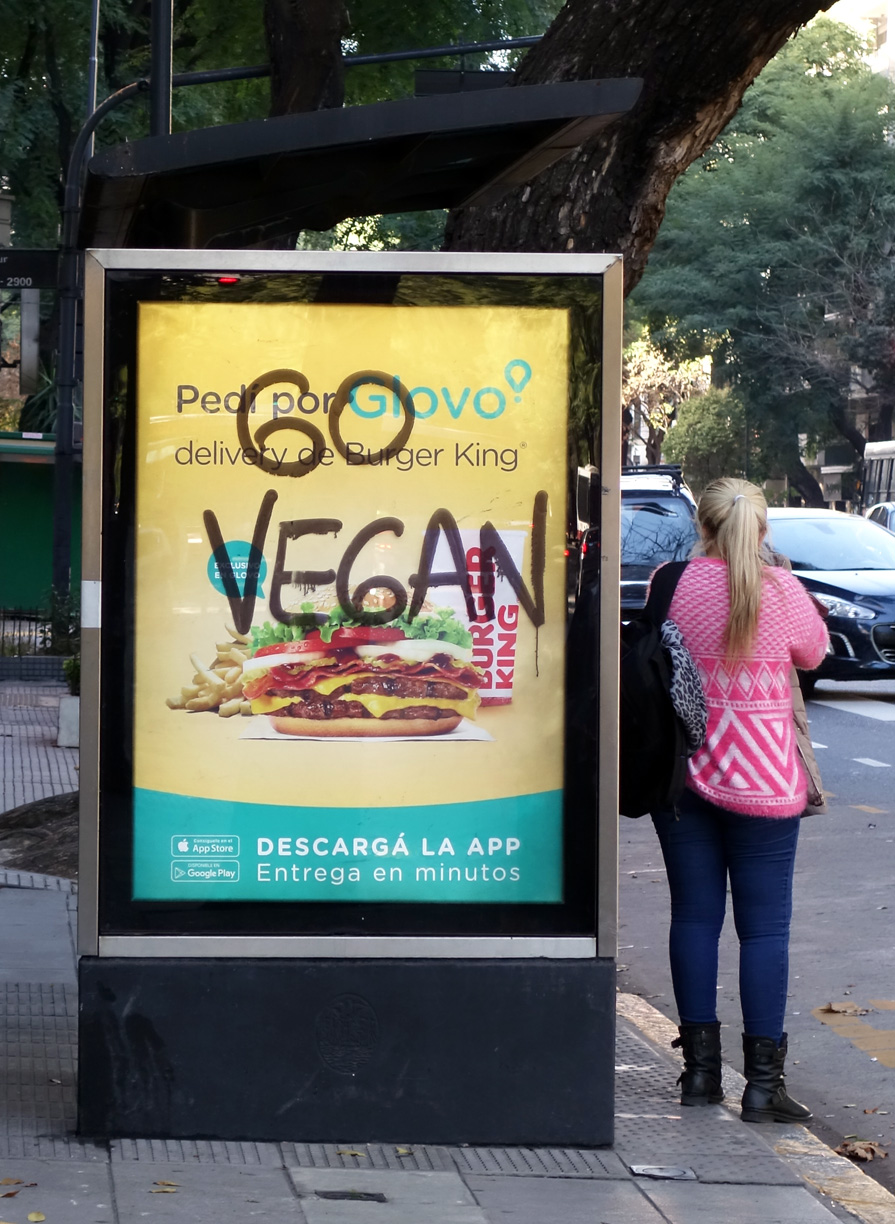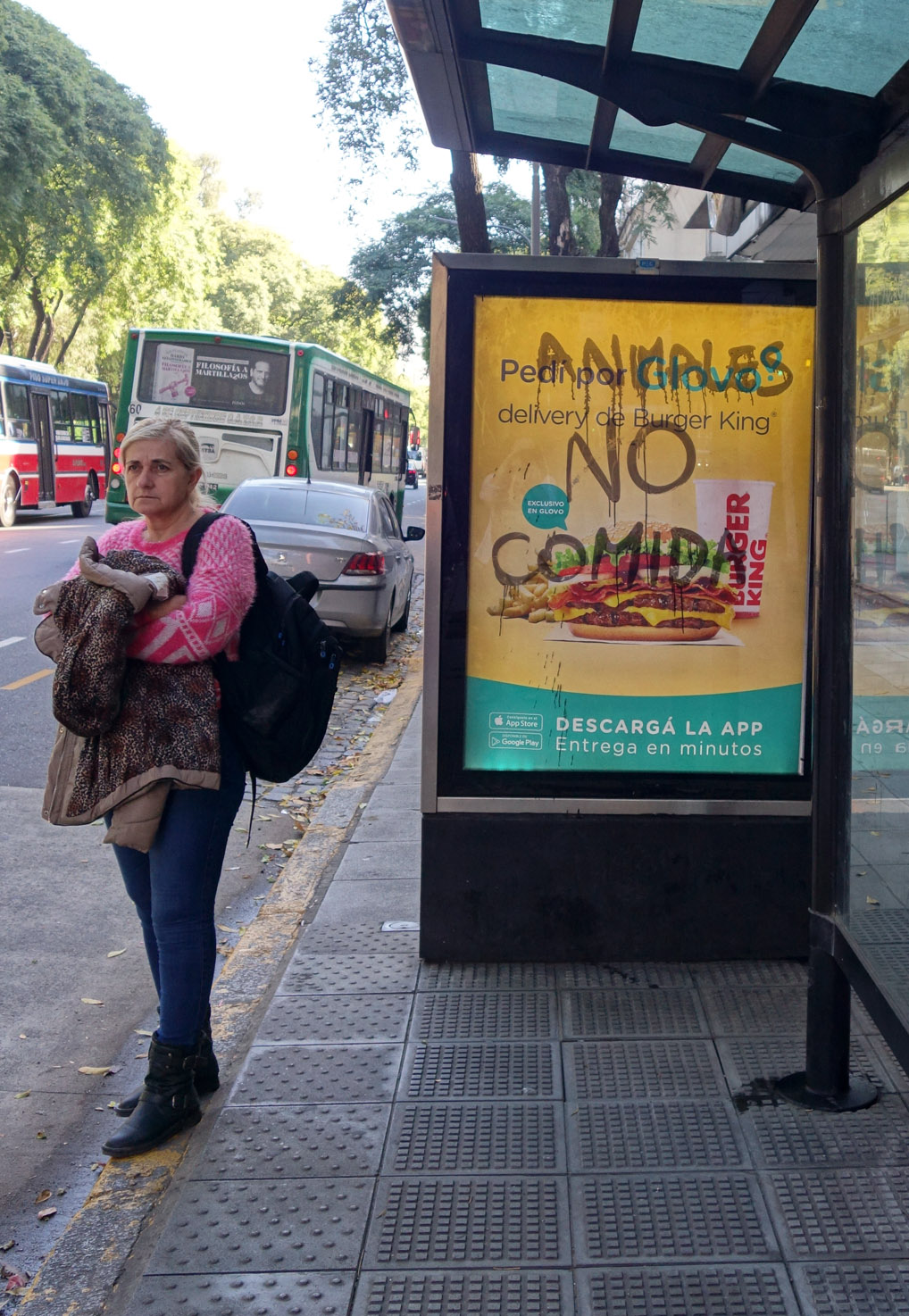Saturday I went out to see the ferias in Plaza Serrano and Plaza Armenia, and also just to walk around Palermo Soho, a neighborhood that is supposedly reminiscent of Soho in NYC. I ate at a vegan “fast food” restaurant which had Chinese-influenced vegan “hamburgers” of all sorts, but I didn’t think it was very tasty. Then Patricia and I made a night of it in the house, drinking champagne and eating pizza (which we burned a little by not understanding the oven since it was our first time using it). Everything in the house is gas, and the manual lighter that was built into the stove is broken so if you want to use it, you have to light a match, turn on the gas, and wait for it to catch alight in whatever you’ve turned on - even in the oven, which was a first for me! (I’m used to this system with ranges, but never before with ovens!)
Sunday Patricia took me to La Boca, a neighborhood which is famous for its painted houses which resulted from impoverished townspeople using random siding in various colors as their building material, which had the side effect of creating a very vibrant look. There are a few blocks that are extremely touristy in this neighborhood, but the rest of it is considered quite rough, so Patricia thought it best that she escort me. We wanted to have empanadas, but finding a restaurant that served several types of vegetarian ones took a lot of searching! Eventually we found a place that had corn and cheese, four cheese, and spinach and cheese ones, so I had one of each. The corn and cheese and four cheese versions were my favorite of the three. La Boca also is known for its football (soccer); there’s a stadium near the touristy area and this evening there was a game, so we left before fights and/or riots broke out on the street (apparently this is a thing that sometimes happens in Argentina).
Monday we were going to chill and I was going to work in the studio, but then we found out that there was a city-wide transportation strike of all modes on Wednesday and we were planning to have an excursion then, so instead we went to Puerto Madero, where there is a famous bridge called El Puente de la Mujer, which translates to “Bridge of the Woman” or “Woman’s Bridge.” It is meant to abstractly represent a couple dancing the tango. I don’t see it. I guess on the weekends this area is somewhat hopping, but Monday is a day when most stores are closed and Puerto Madero is mostly offices anyway, so though I appreciated getting to see it, I wasn’t super enthused with this neighborhood. We did stop for ice cream, though - I’ve been on a hunt this whole time for coffee ice cream, which no one has (this is the first time in all my travels that coffee hasn’t been a default flavor!), so Patricia recommended I try sambayón, which is a port flavored ice cream. I liked it!
Tuesday I went to the garden again. Patricia and I had been trying for over a week to get the garden to let us use two large tree trunk cross-sections that were just chilling in their space, but the garden had other plans for them. (My plan was to make mixed media installations with them to donate back to the garden in a permanent installation.) We then tried to see if they could make us some, but no luck. Then Patricia found similar cross-sections for sale on Mercado Libre, which is kind of an eBay/Facebook Marketplace for Argentina. Patricia didn’t have a profile so she figured I should set one up since I was going to be the buyer. This ended up engendering a cascade of issues, which I won’t bore you with, but several days later we managed to successfully purchase two. We also went to an opening reception for a former professor of Patricia’s, who was exhibiting mixed media paintings and some alcohol ink prints. I really liked the latter.
Wednesday was the strike day so I worked in the studio and on getting Mercado Libre to cooperate. The following day was also a studio day.
The next day I was feeling too cooped up, so I went to eat out in Recoleta and then walked a short distance to take in the famous Recoleta cemetery. The cemeteries in Argentina are all walled in, which is an interesting cultural difference. The interior is really surprisingly compelling, though - I’m not generally a big cemetery-tour person, but I really enjoyed strolling through this one.
Saturday I worked on art in the morning, and then met Patricia in Palermo Soho to see an art opening at a plant store in the early evening. The exhibition was cyanotype prints of plants, which was a good fit for the space! Then Patricia and I ate at a strange Middle Eastern vegetarian restaurant that had trippy videos of Jesus and Krishna playing. The food was okay but not stellar.
Sunday Patricia and I went out to the suburbs to see a more “countryside” area of Buenos Aires at the house of a friend of hers. We had lunch in an town called Ingeniero Maschwitz followed by ice cream - and this place had the closest to coffee ice cream I’ve seen here (it was called moka, but there was no apparent chocolate) and also had a fantastic flavor called rusa which was walnut custard.
Some general musings, in no particular order:
An Uber driver asked me if I was vegetarian out of nowhere and when I answered yes, he then said he could tell by my appearance. I asked what that meant, and he responded that I look healthy. Then he asked me how old I was and upon hearing my response he added that I look younger because I am vegetarian. I didn’t get the impression that he was vegetarian, but I should’ve asked. Two different drivers thought I was from Brazil, which is perplexing because I don’t know how my accent could read as Portuguese-influenced…
A handful of the words are different in Argentinian Spanish. Avocado is a weird one - I’ve never heard palta before. Many people here speak English pretty well - a much higher percentage than in Spain - though of course most of my conversations tend to be held in Spanish since we are in Argentina.
The house keys in Argentina are old school skeleton keys. Not just for my house, but others too.
I’ve read that Buenos Aires is the Paris of South America. I have to say that while I’m having a fantastic time on my residency here and love BROTA and the botanical garden, the city itself has suffered from the economic crisis in Argentina: it has edged out art and artisan products, independent restaurants, public transportation updates and improvements like e-signage, and so on. Petty crimes like pickpocketing are also more common. There is a lot to enjoy about the city nevertheless, but I’d like to see what it will become in a hopefully-soon-to-arrive more stable and prosperous period.
The traffic here is terrifying and parking is nonexistent. Natives often are scared to drive in Buenos Aires because there are no rules; I would never recommend a foreigner attempt to rent a car and drive here. I do wish the bus system was more understandable to me, though; I have no problems with using the bus system in Spain in various cities but Patricia was correct that this one, los colectivos, is not set up for easy outsider usage.
The house/mansion I am staying in is in a very ritzy area - apparently famous stars and politicians have houses here and a number of people have told me it’s a really good location. It is not near easily usable public transport like the metro (Subte) or trains.
There are tillandsia (air plants) EVERYWHERE and I want to adopt many of them. I don’t have a CITES certificate, though, so they’ll have to stay here.
